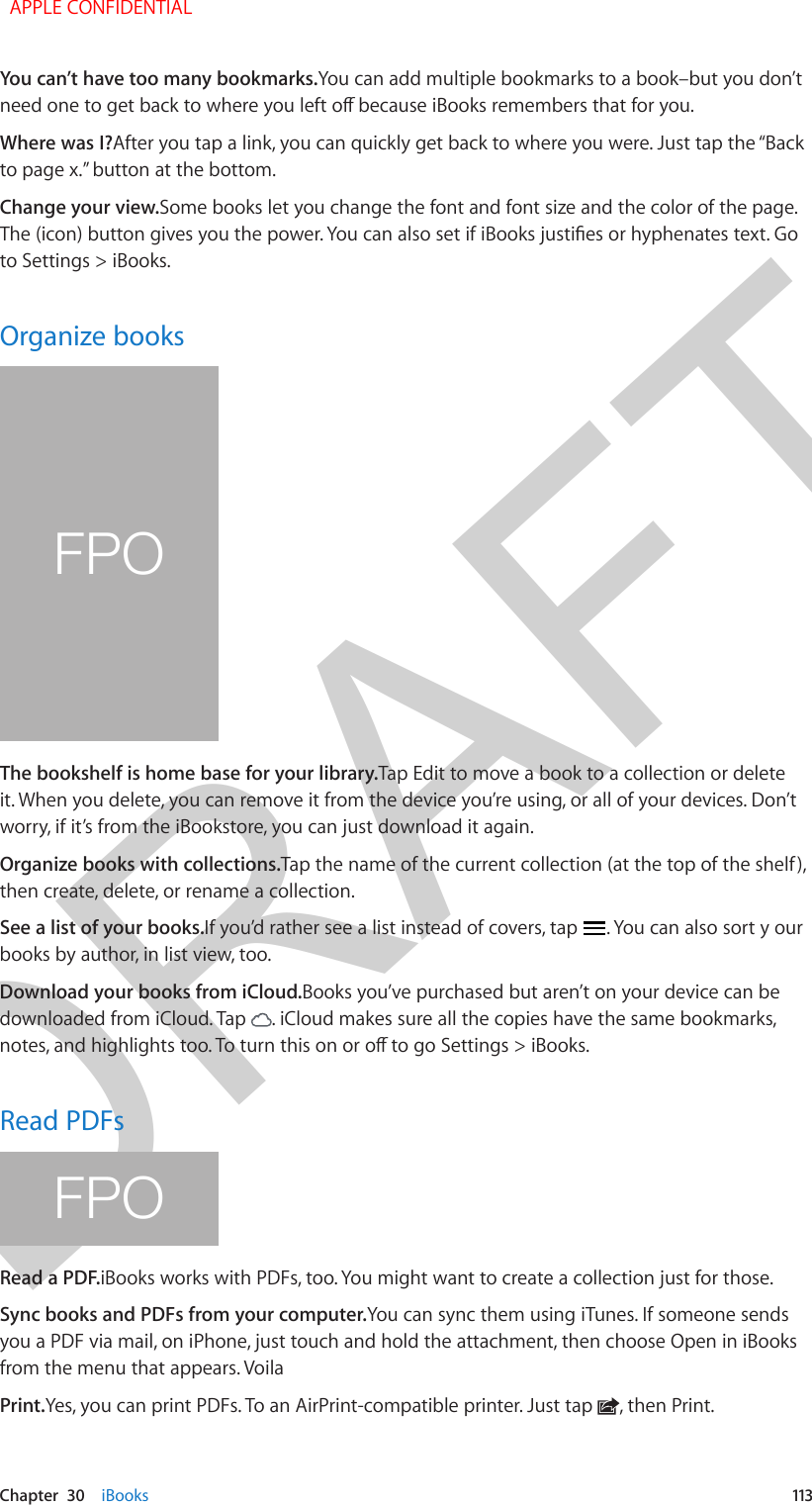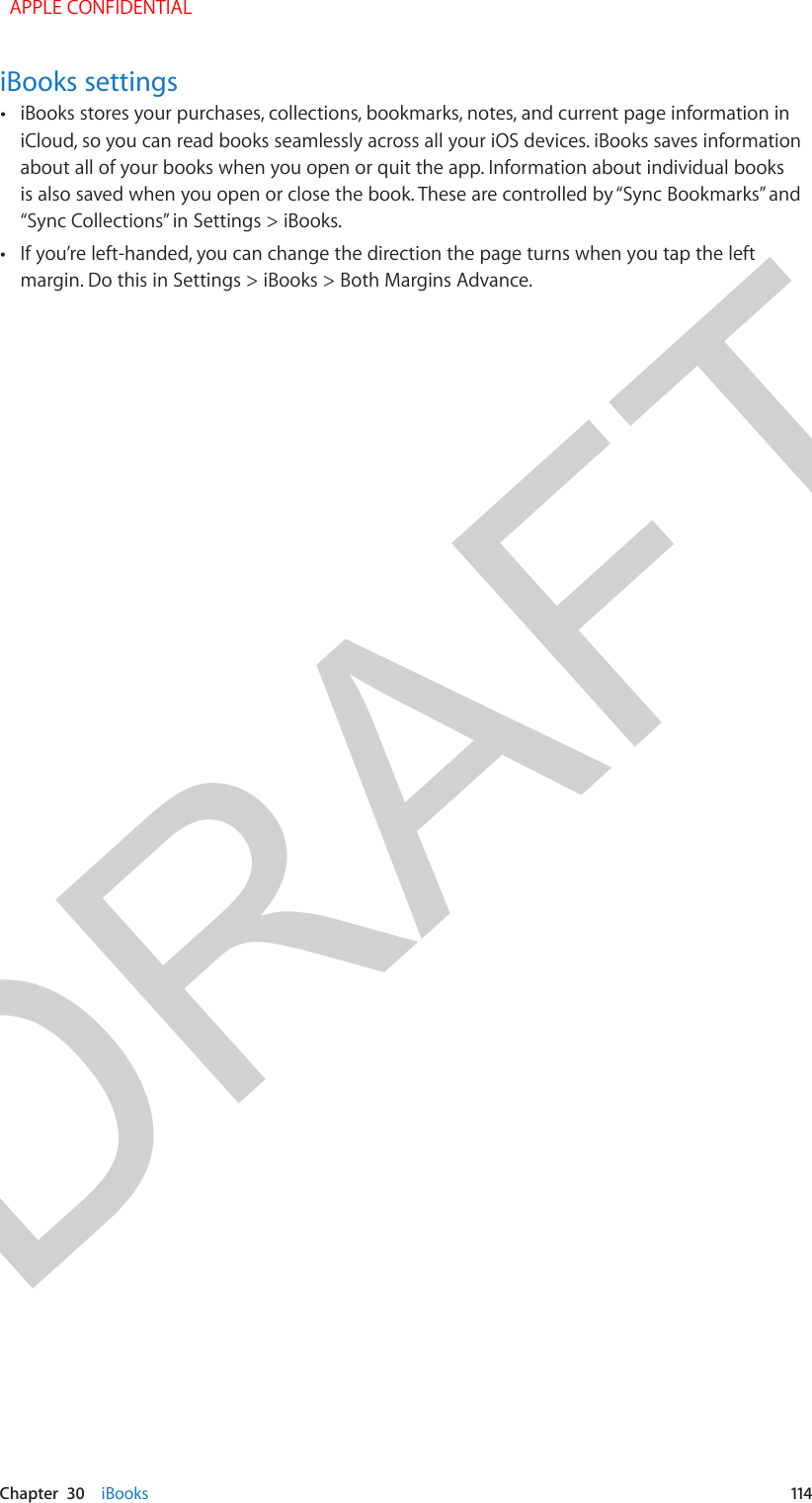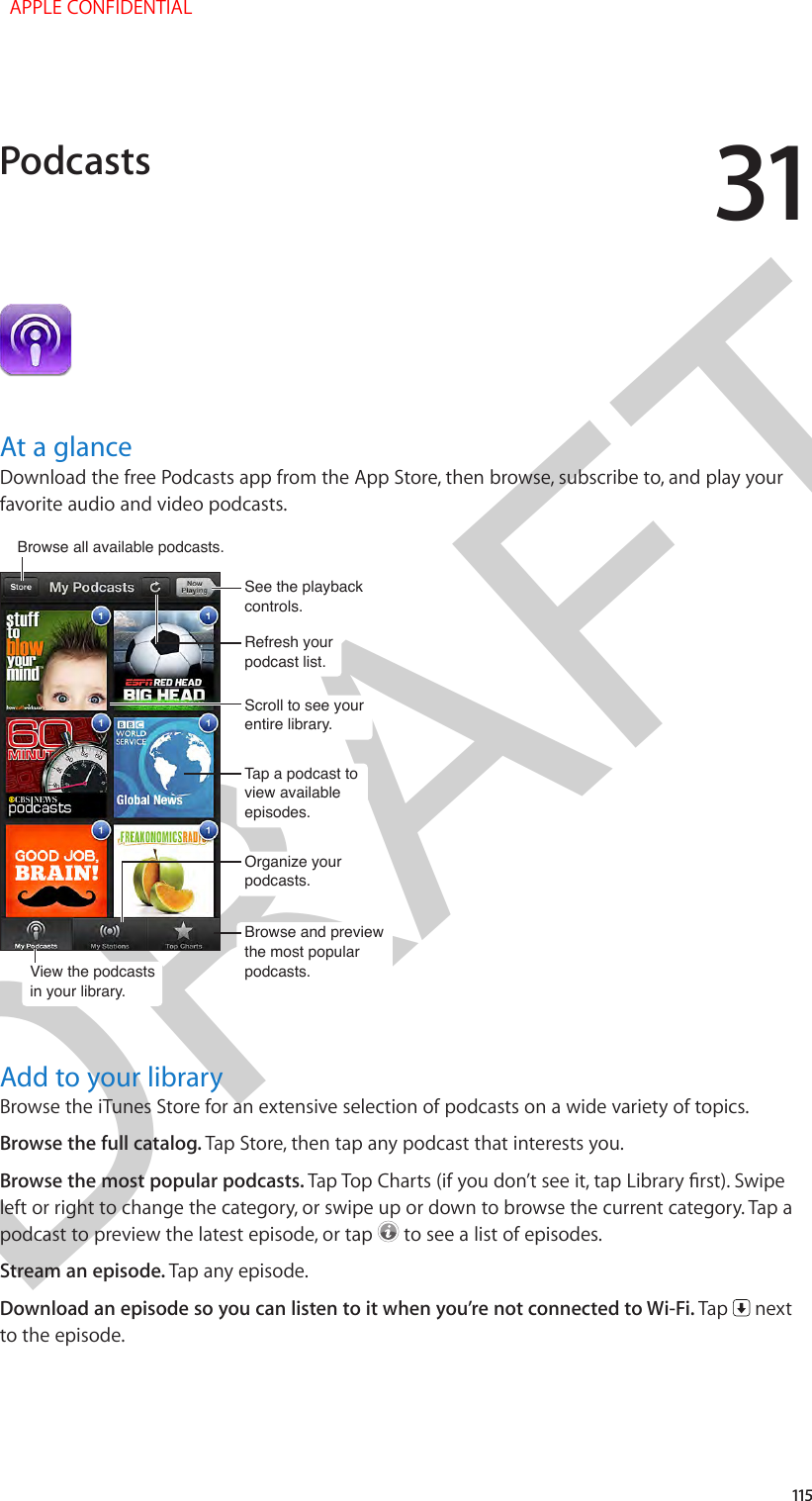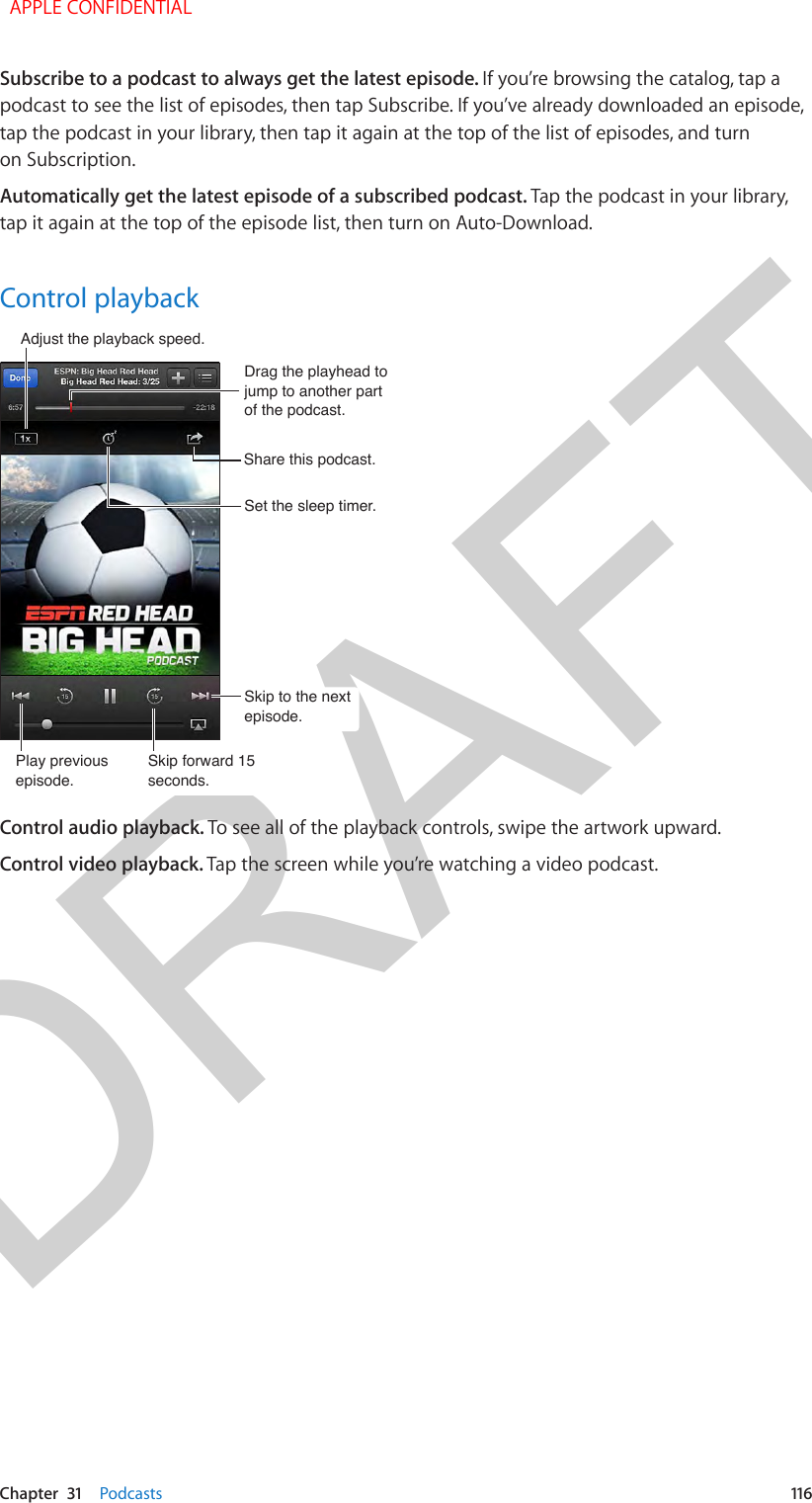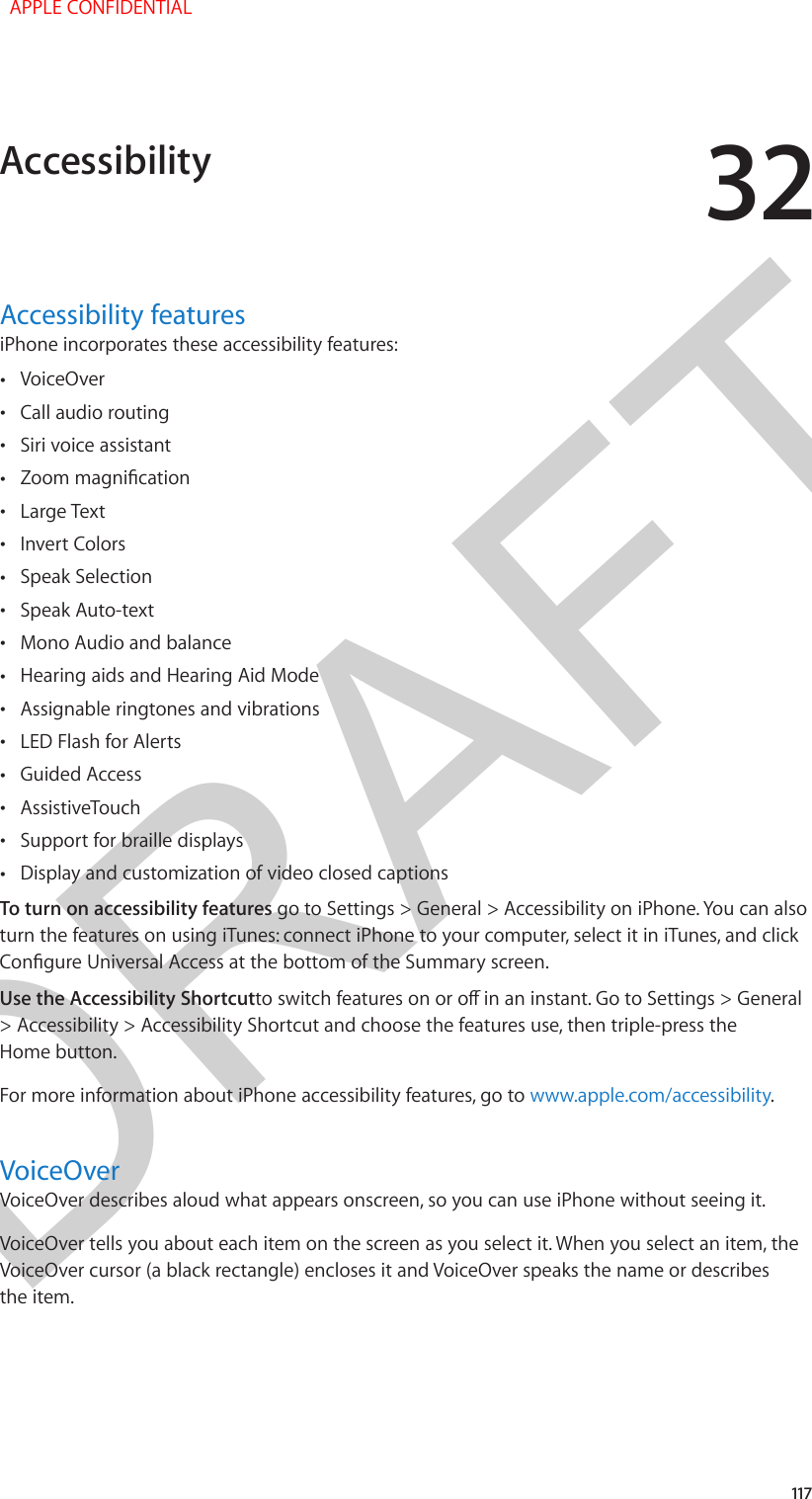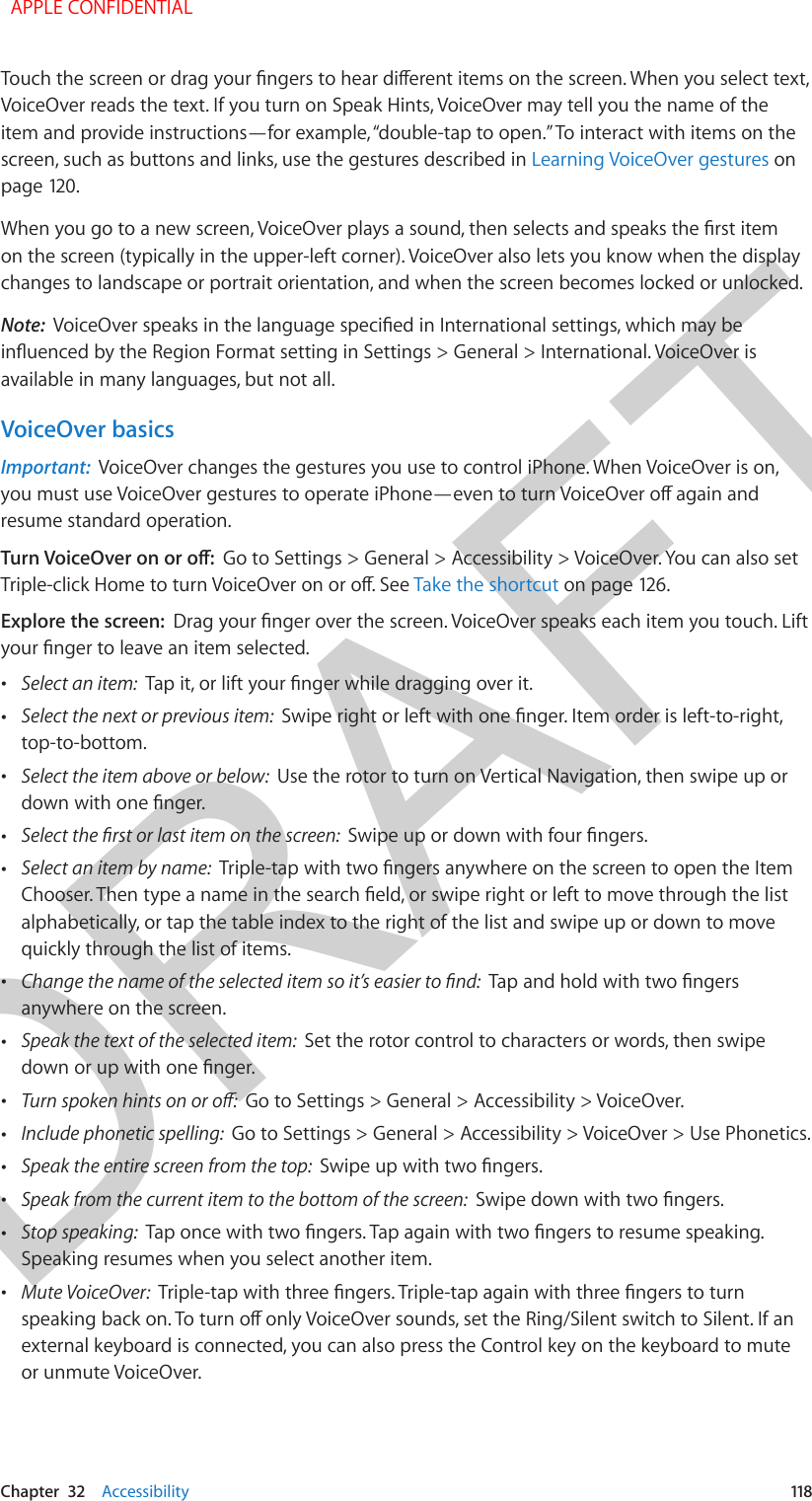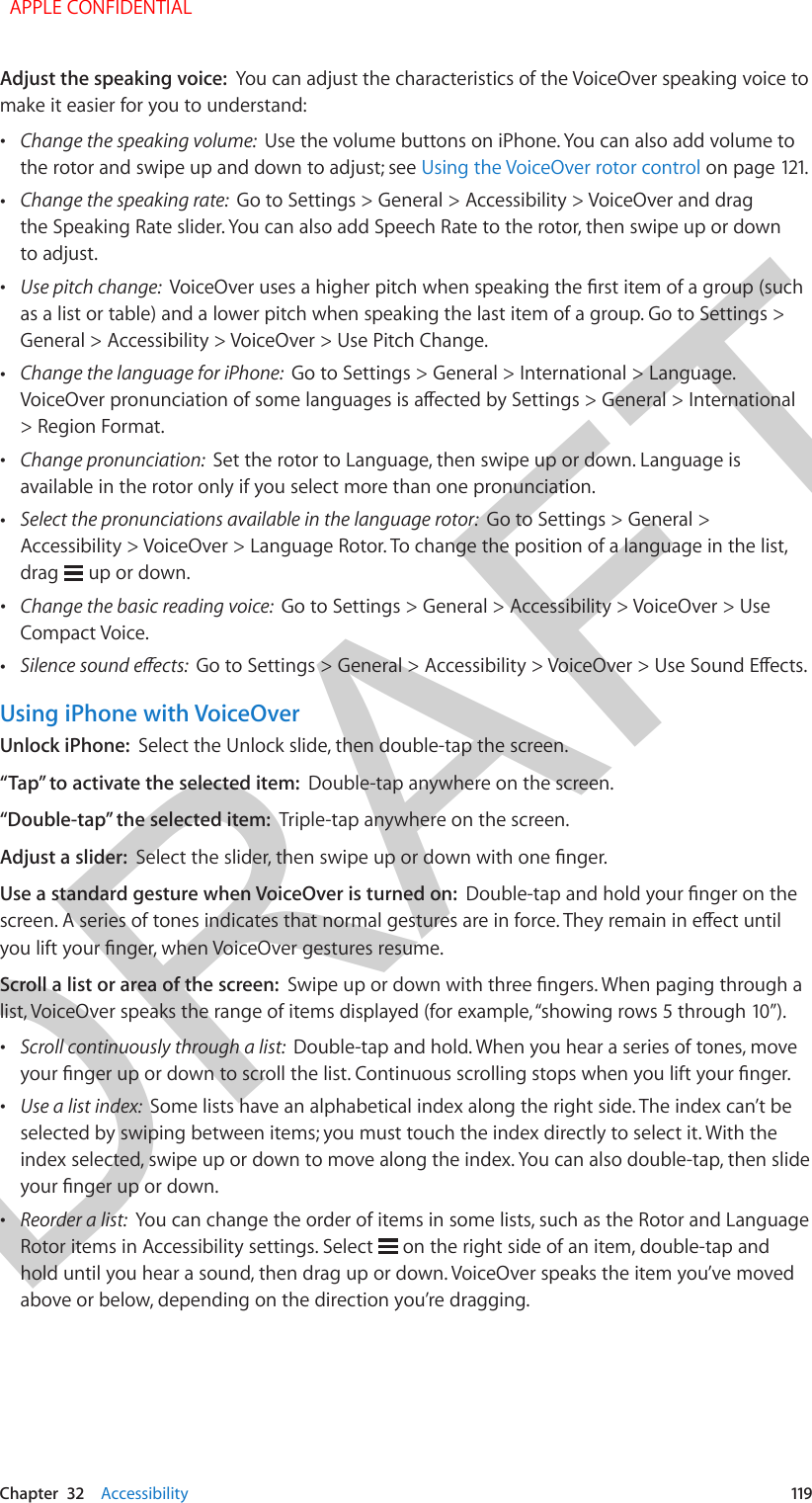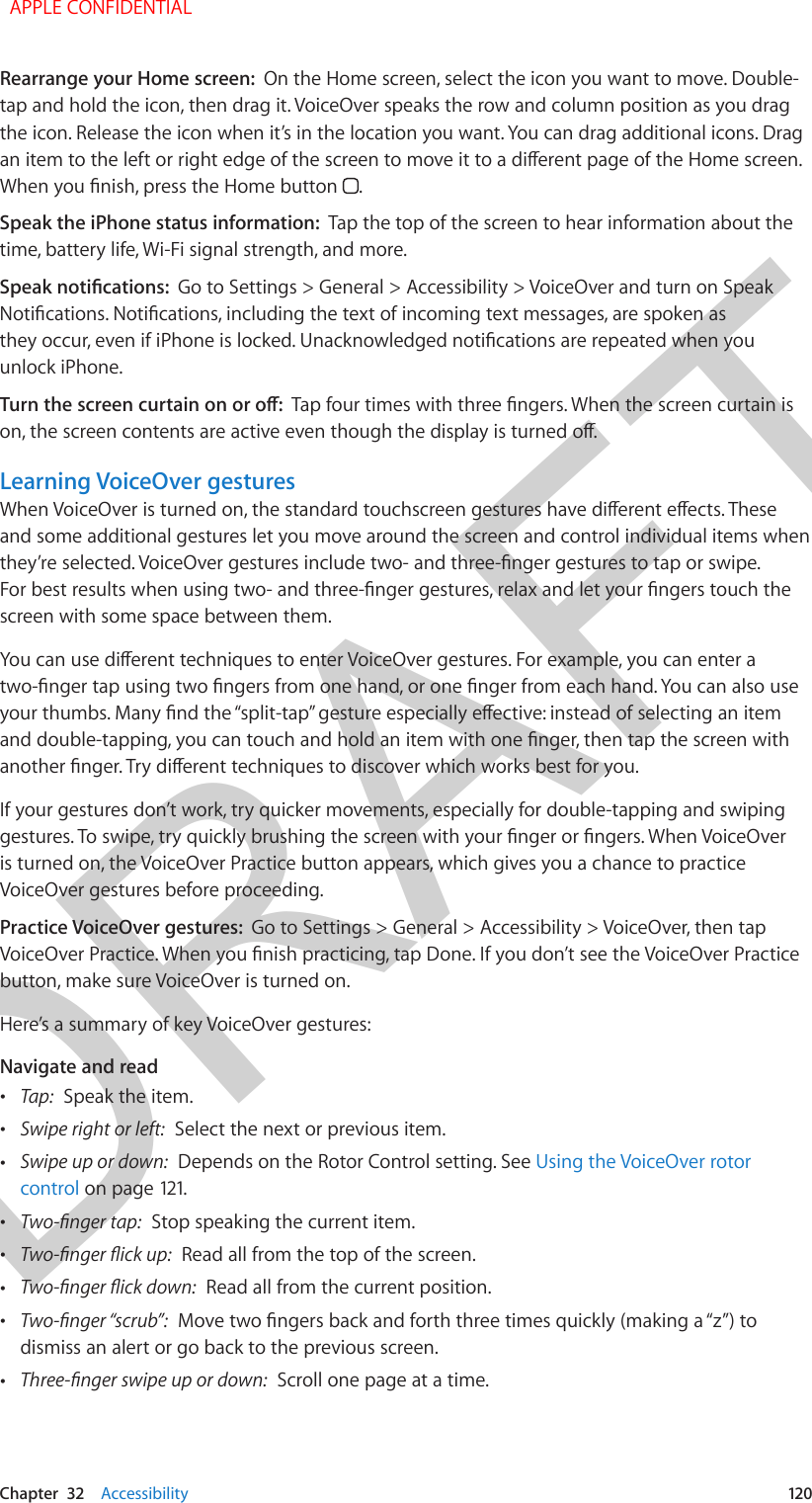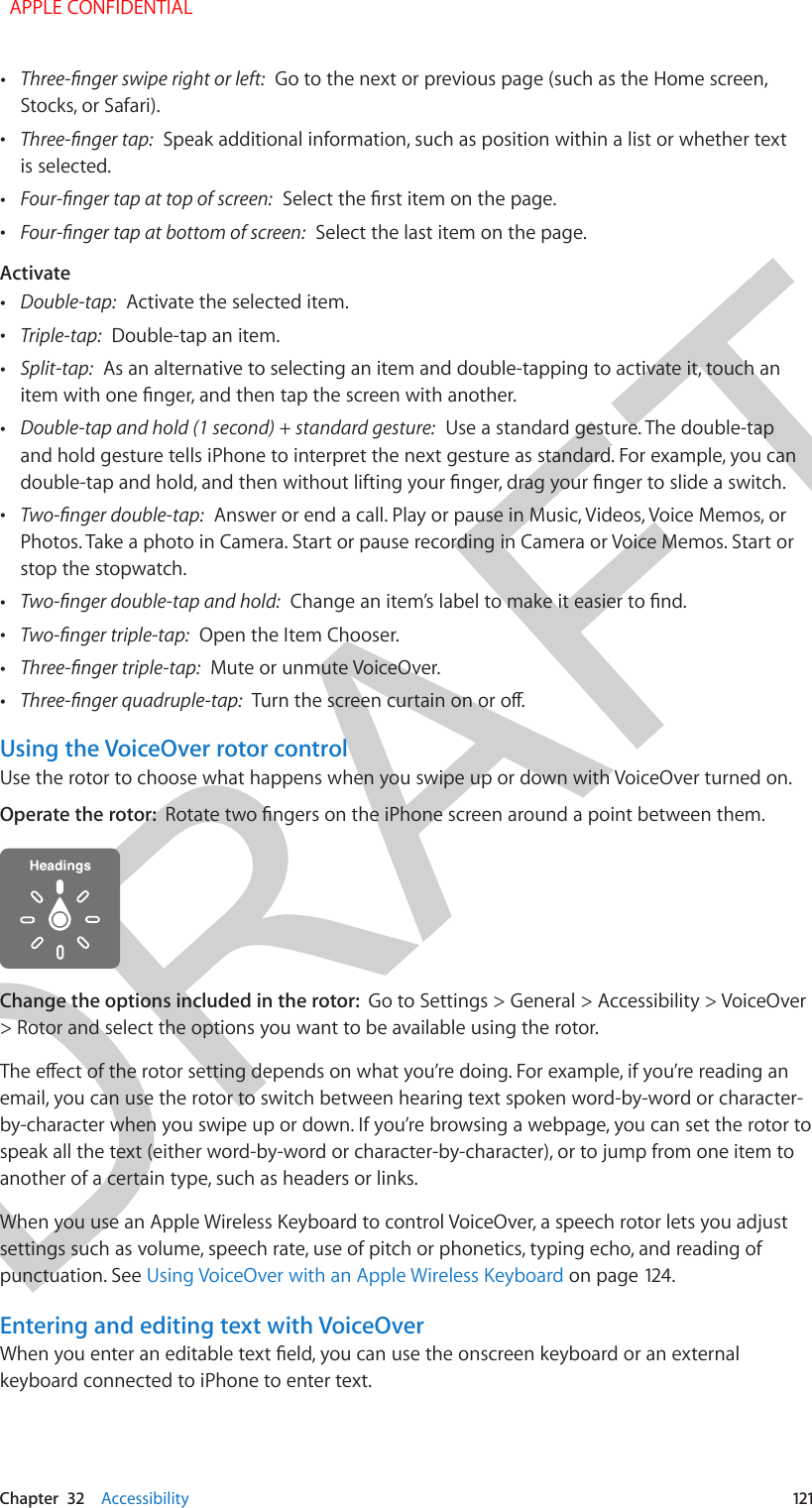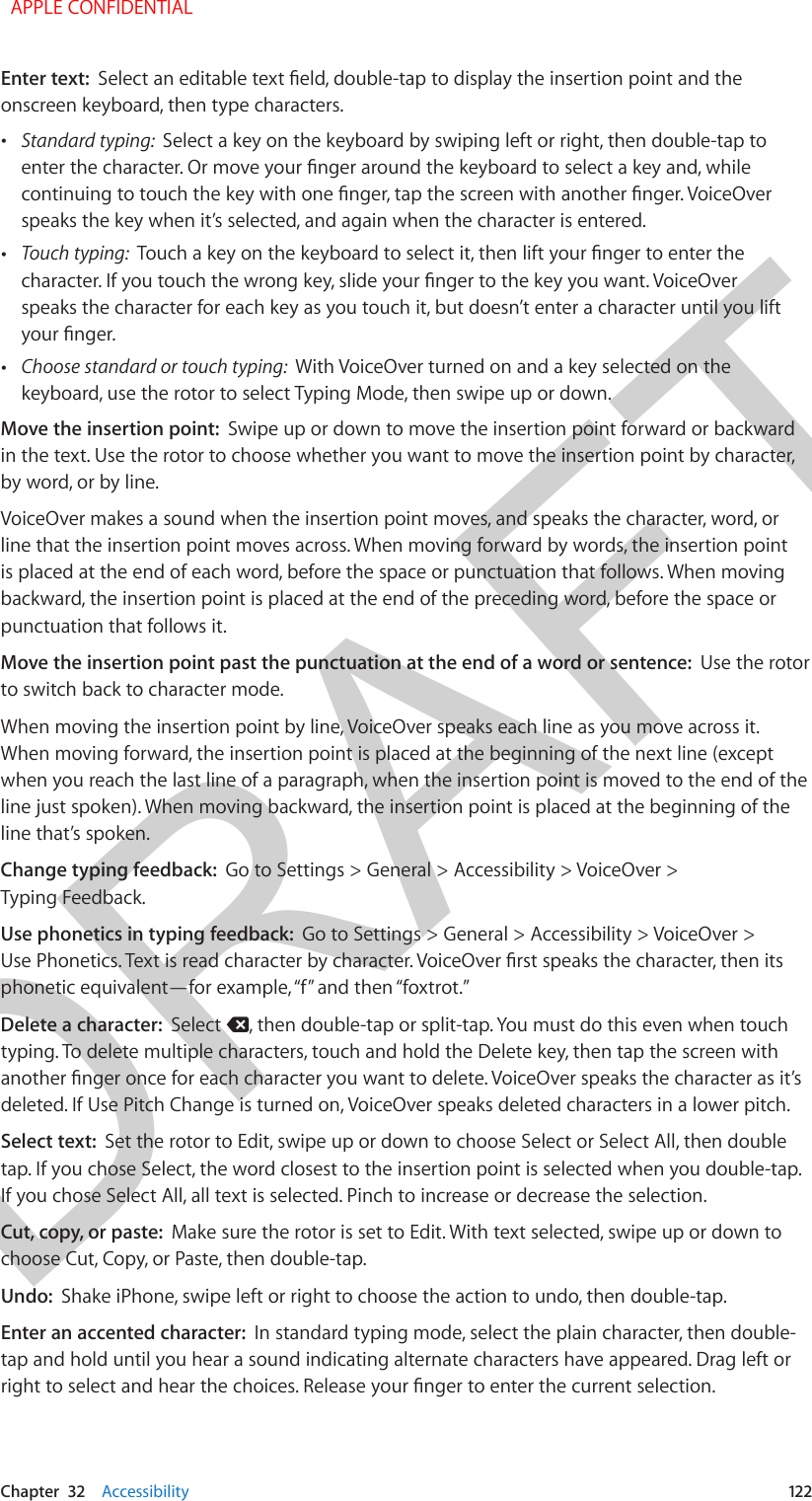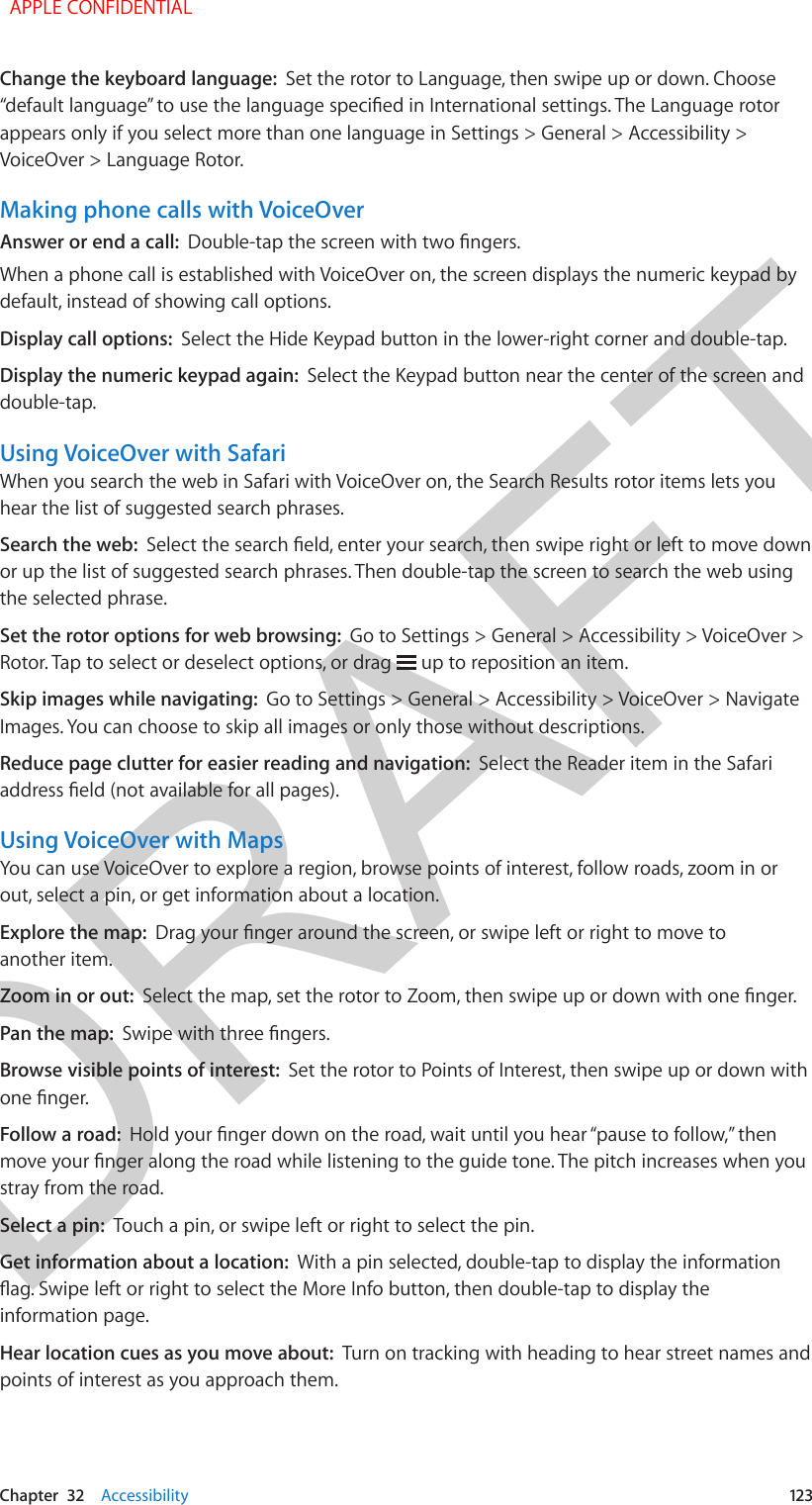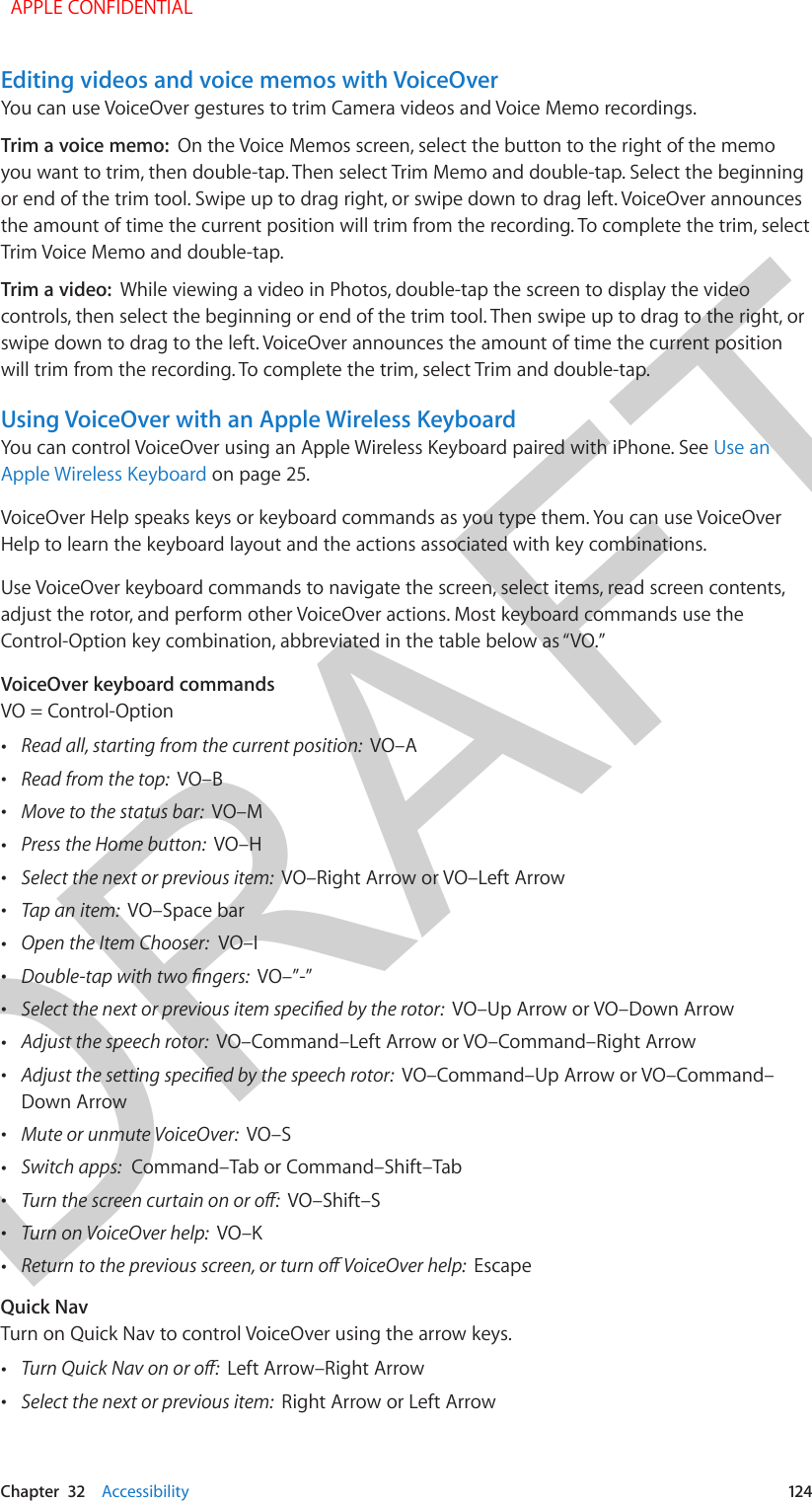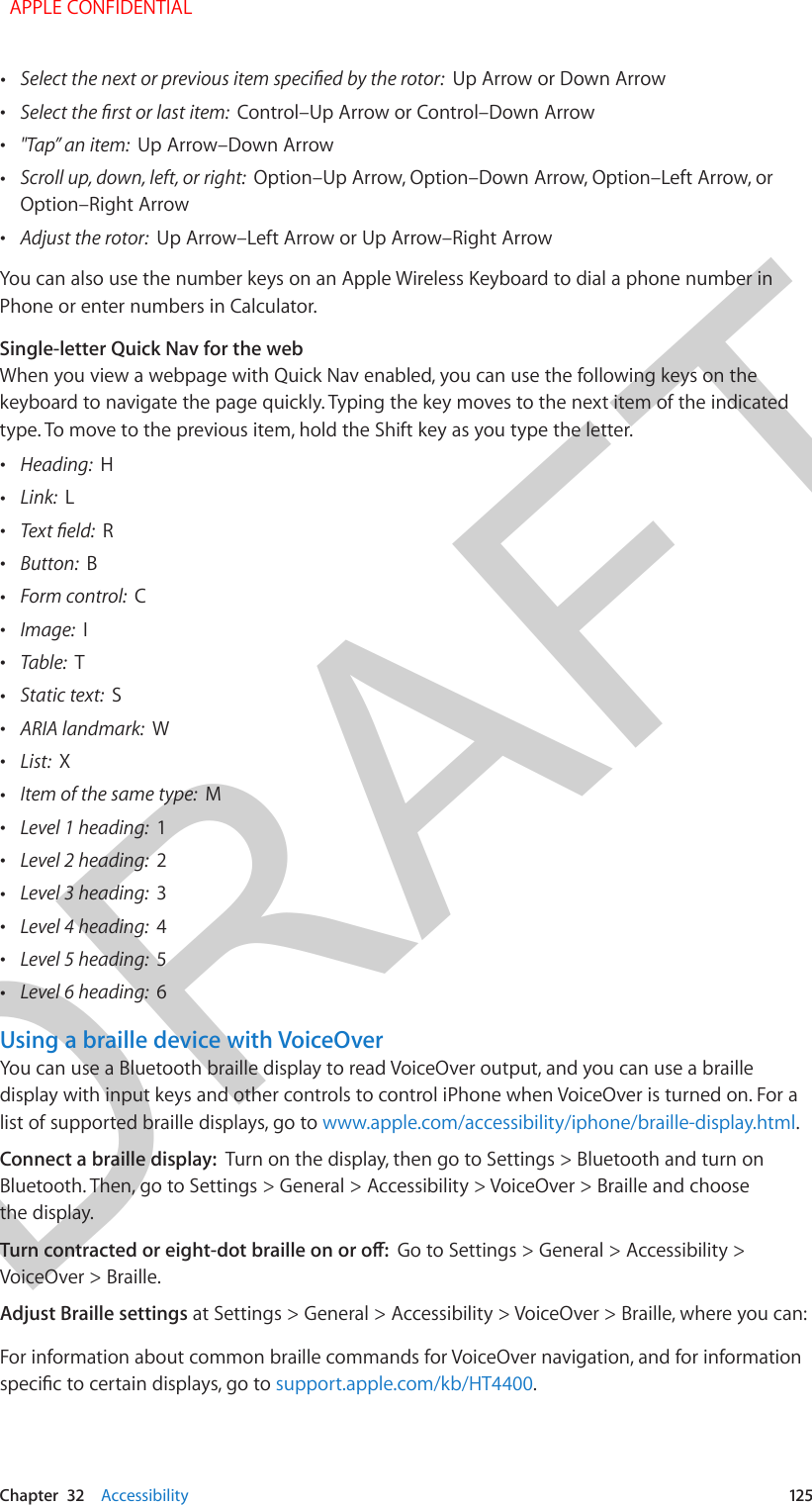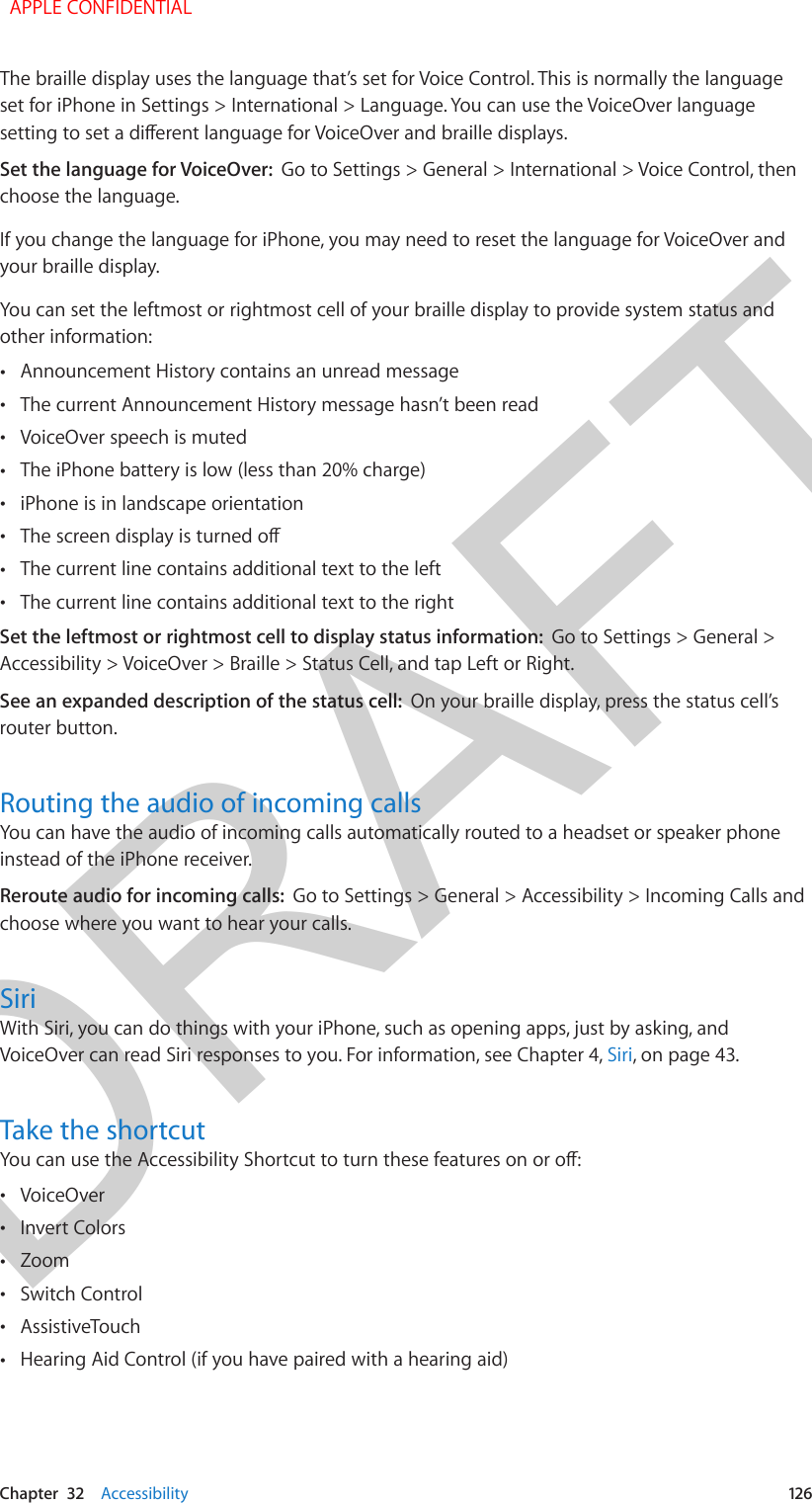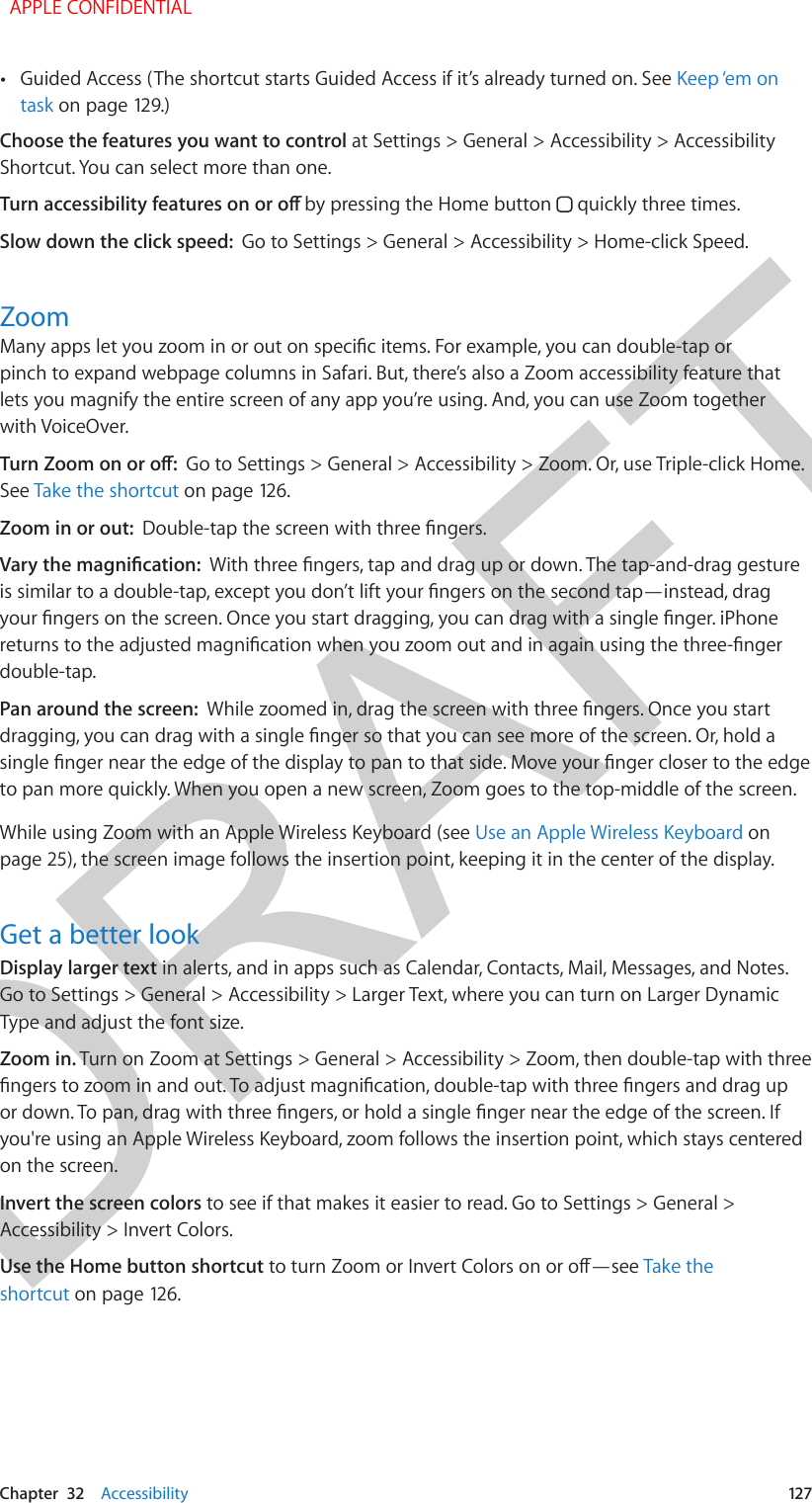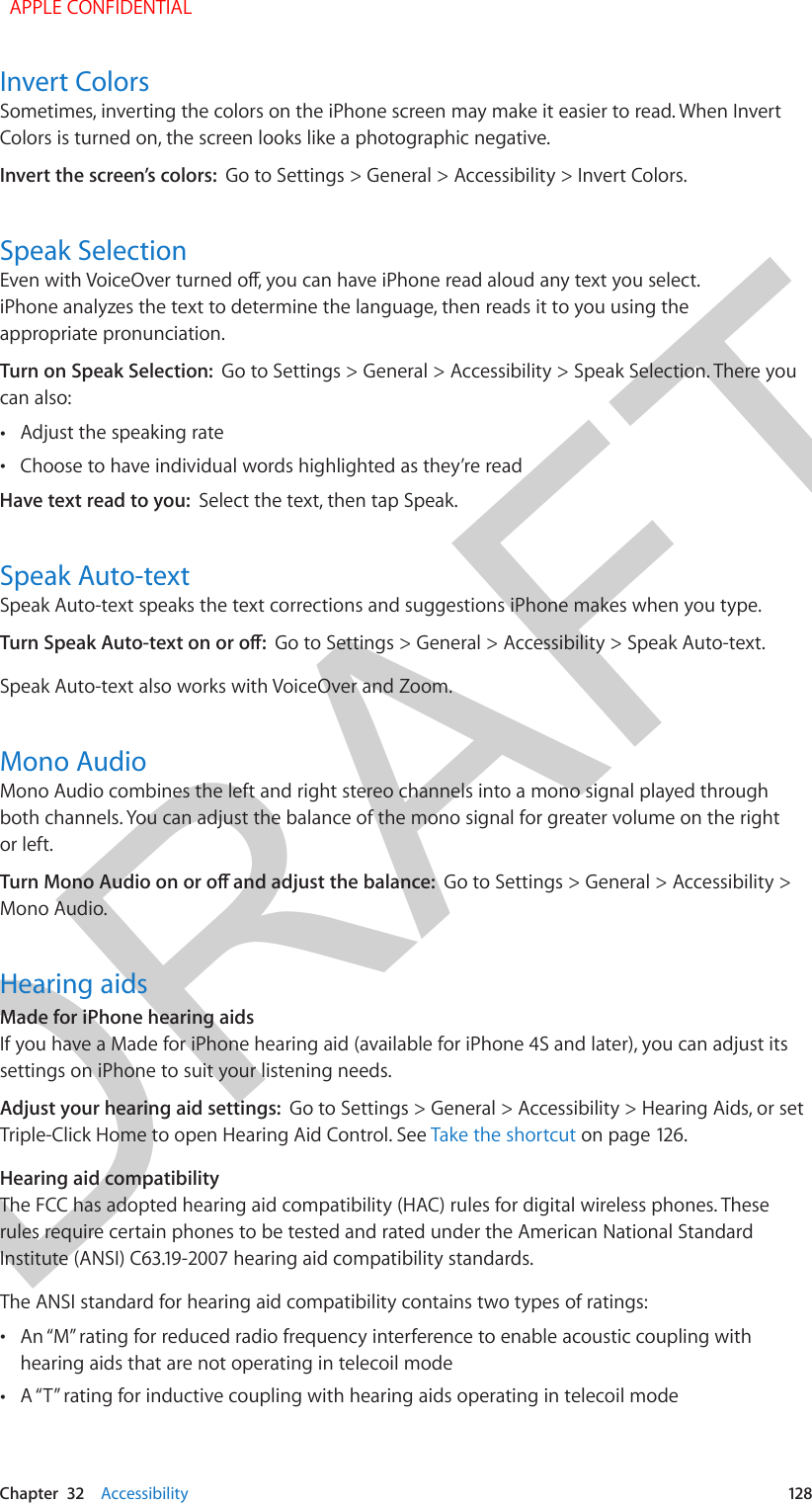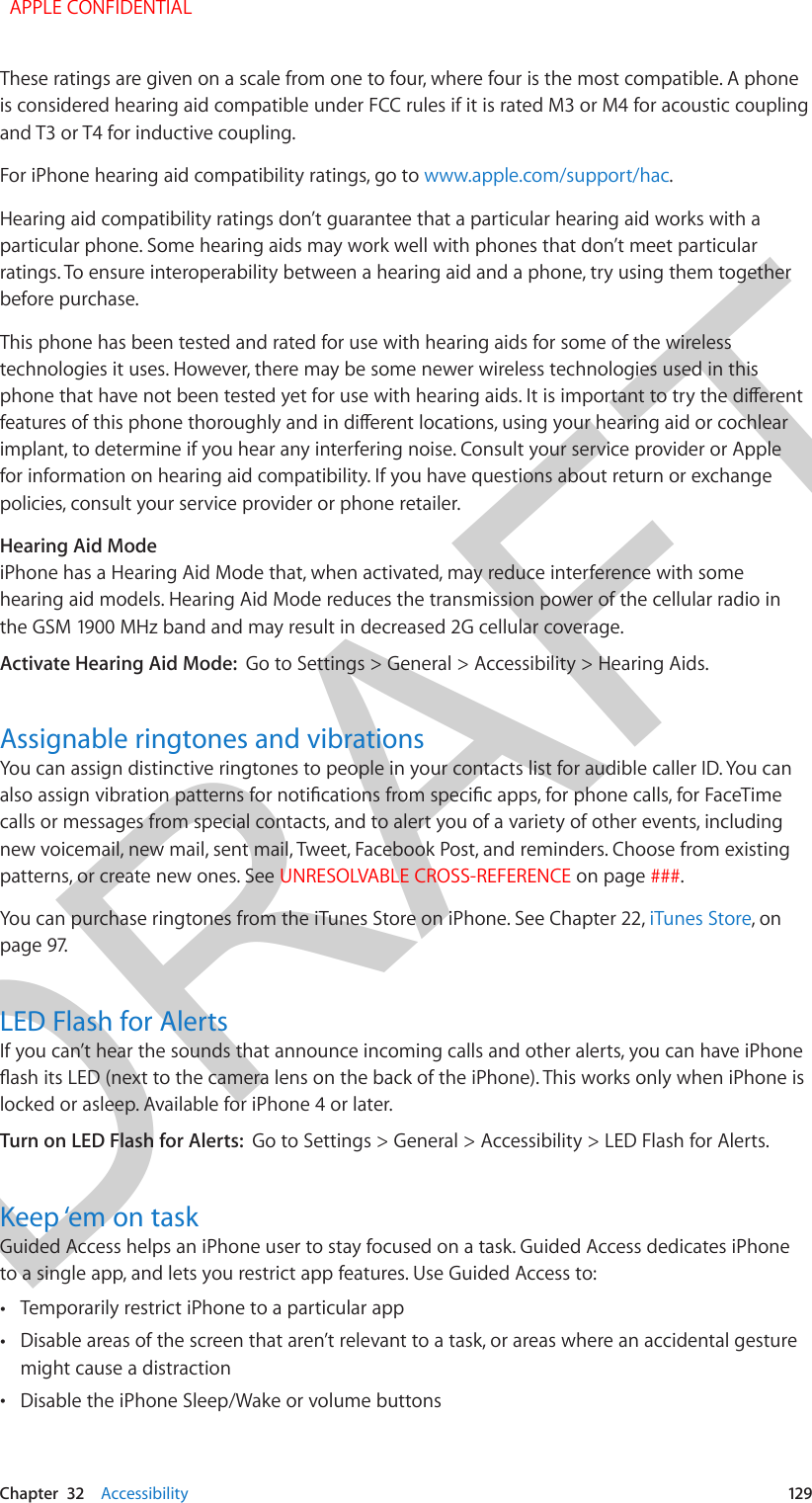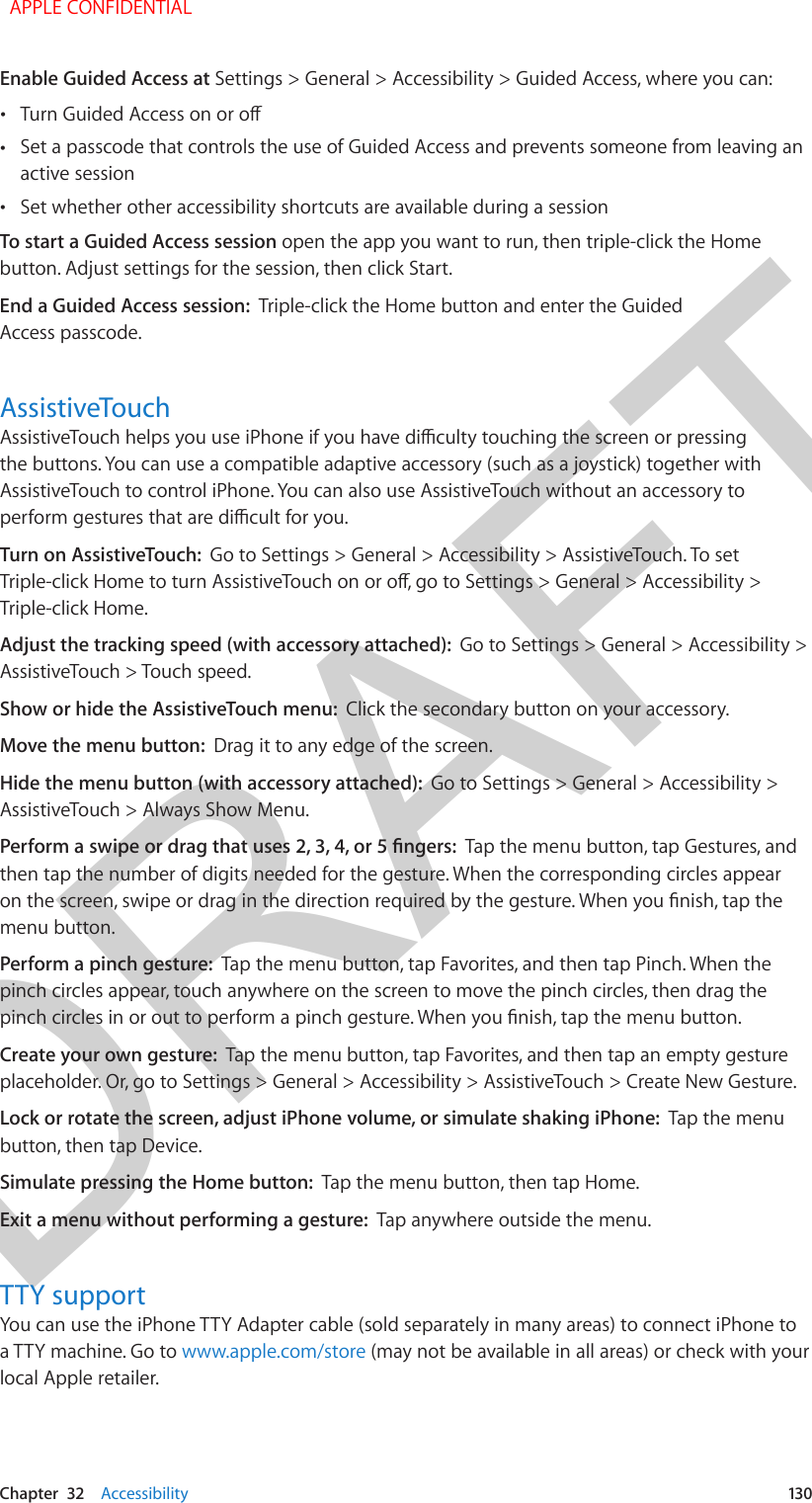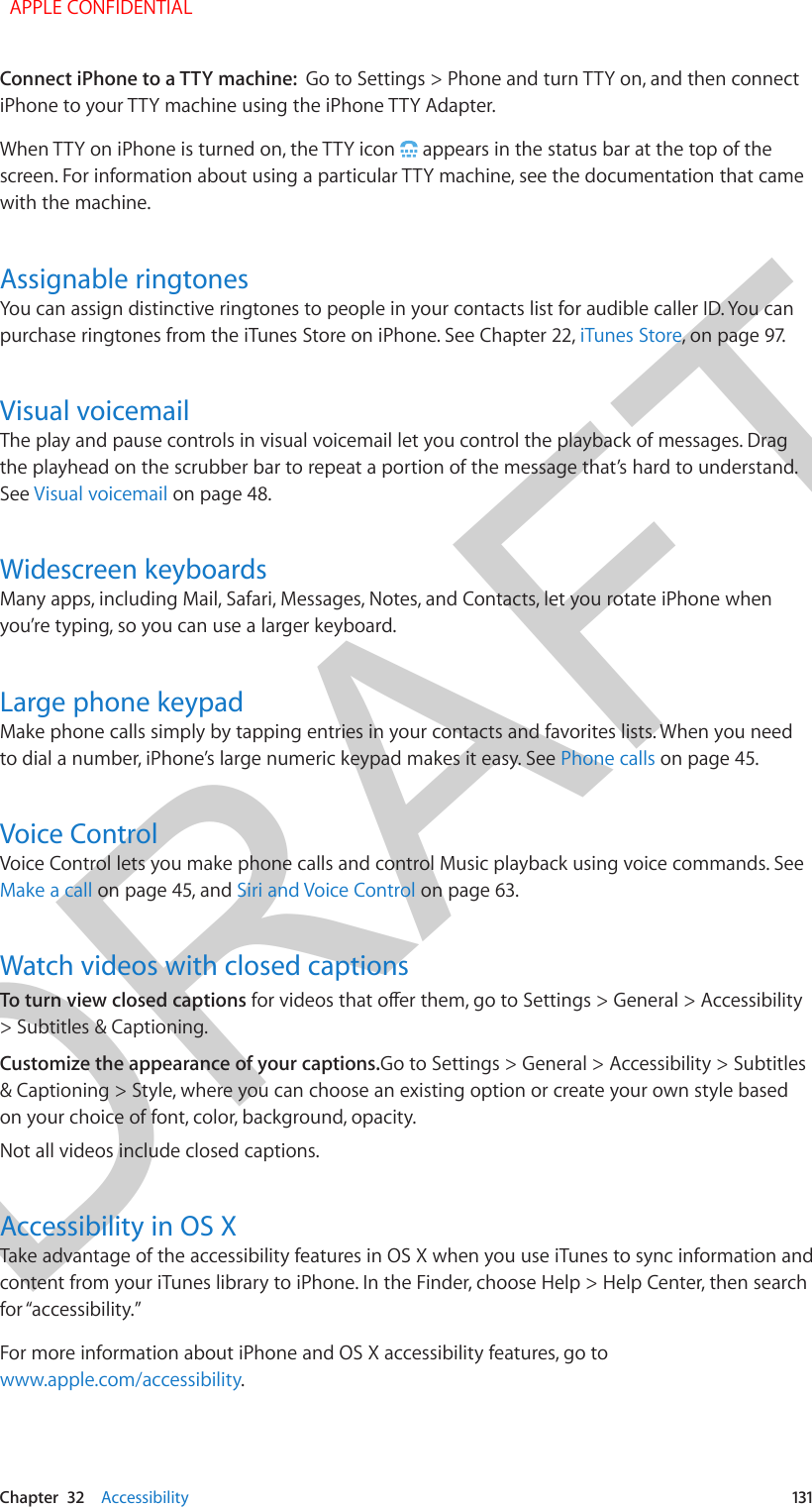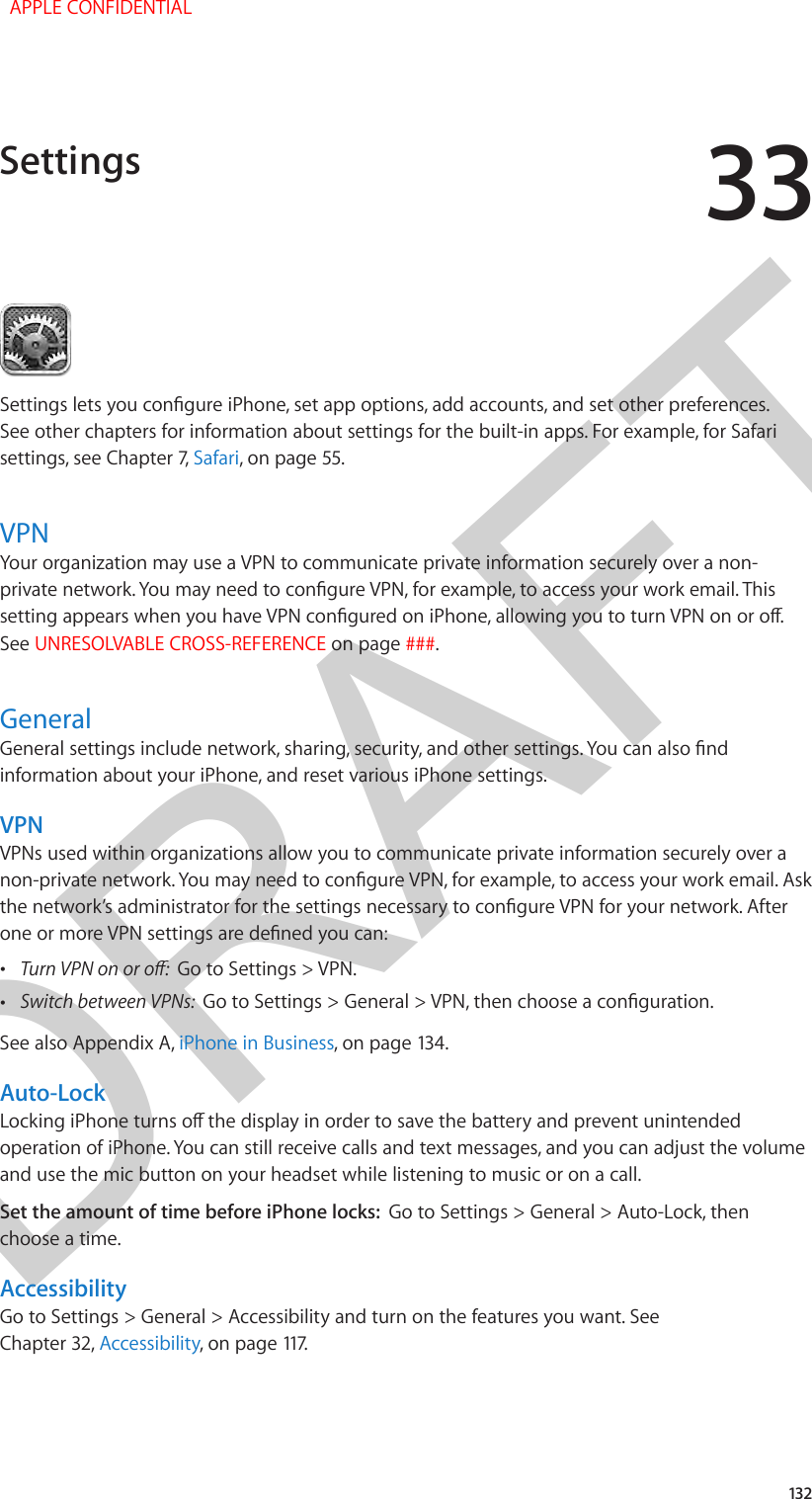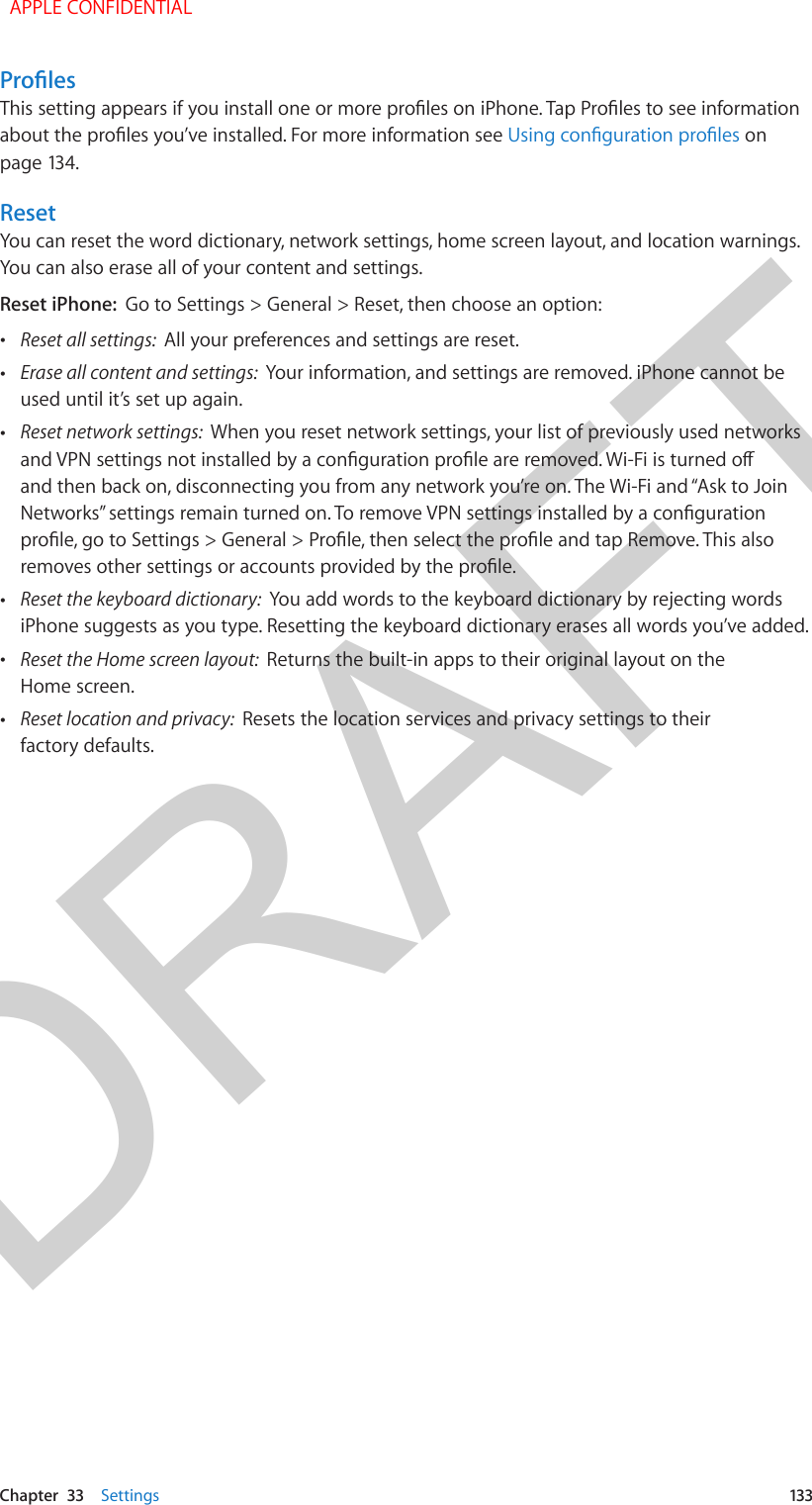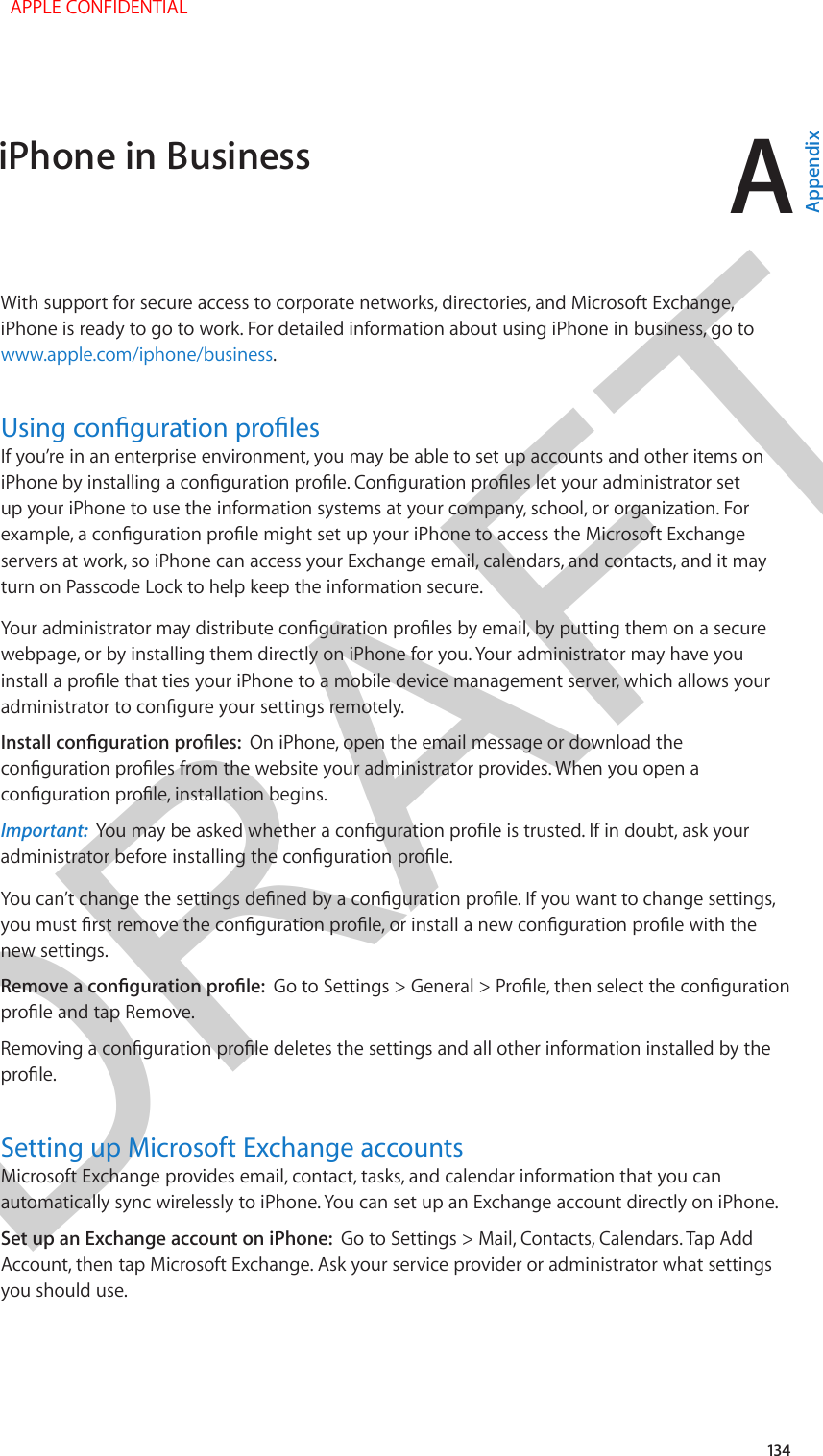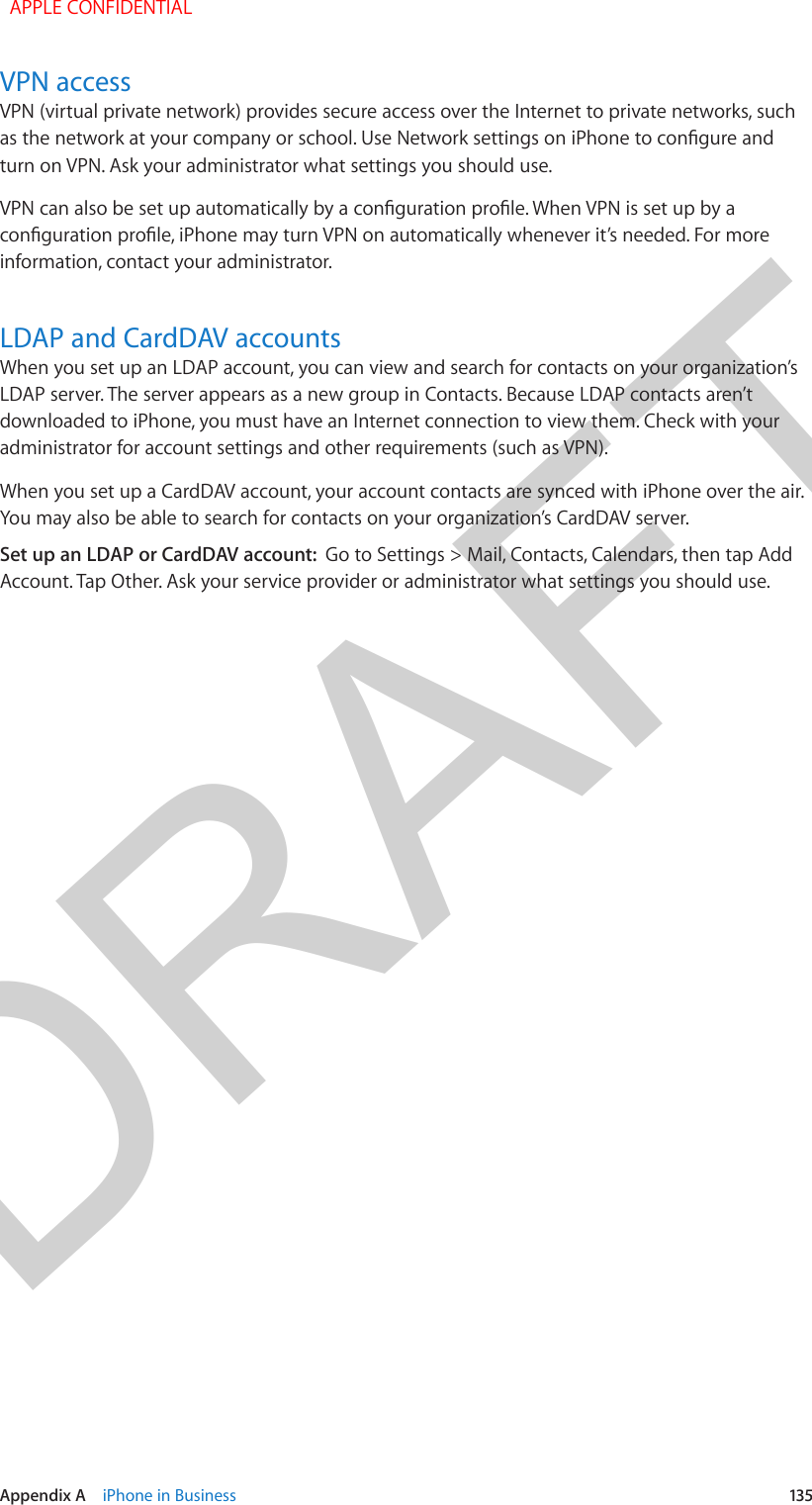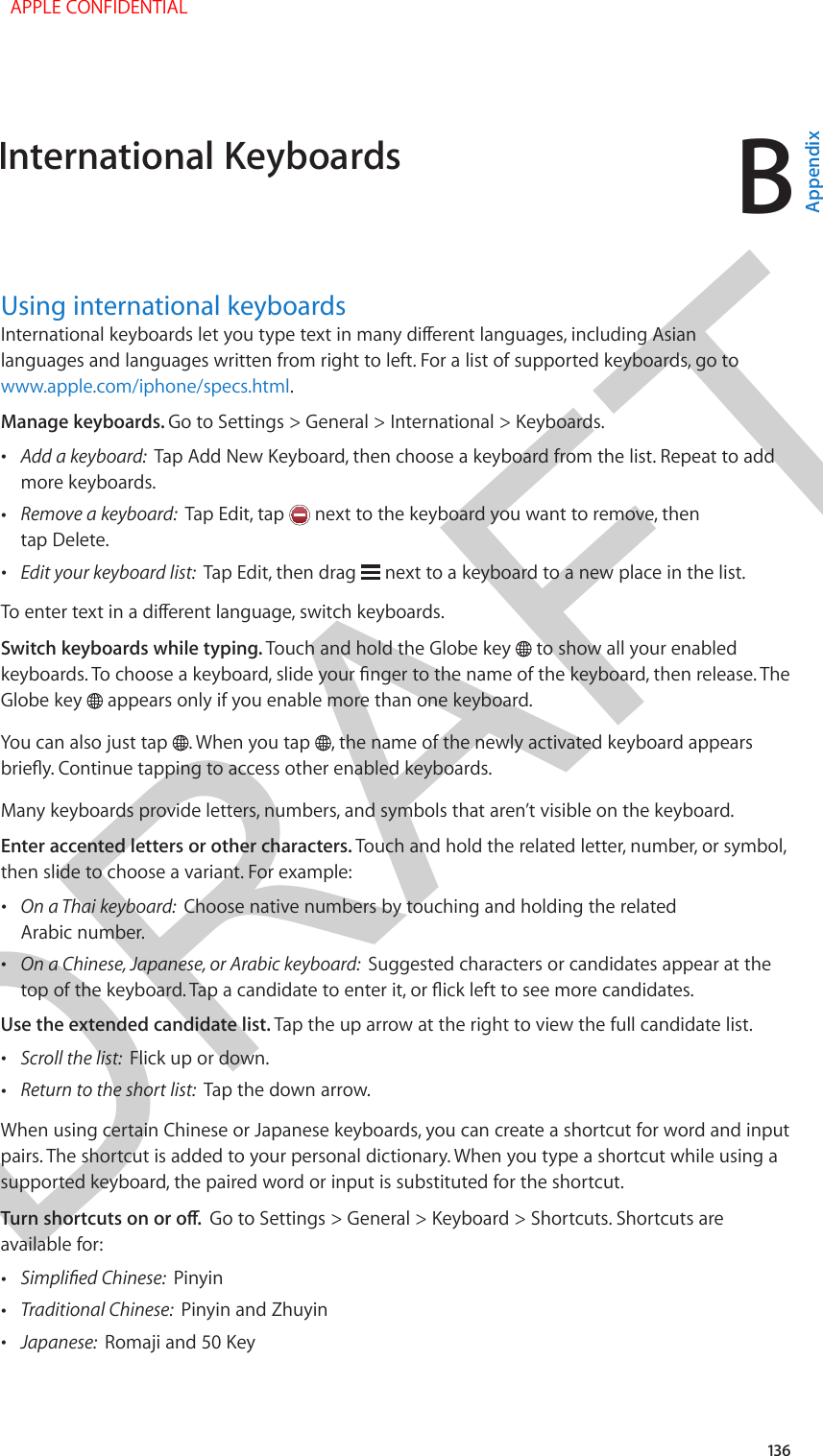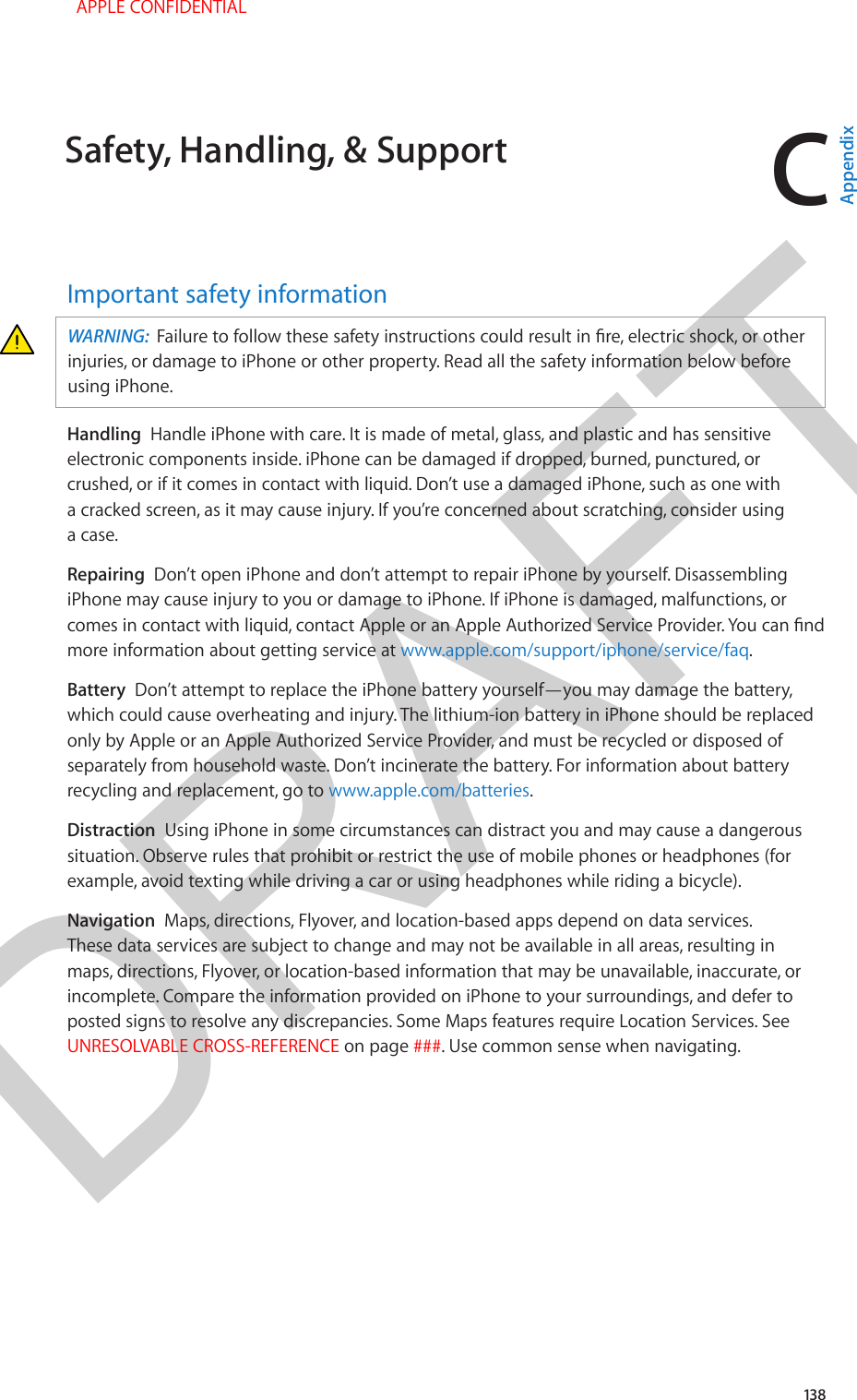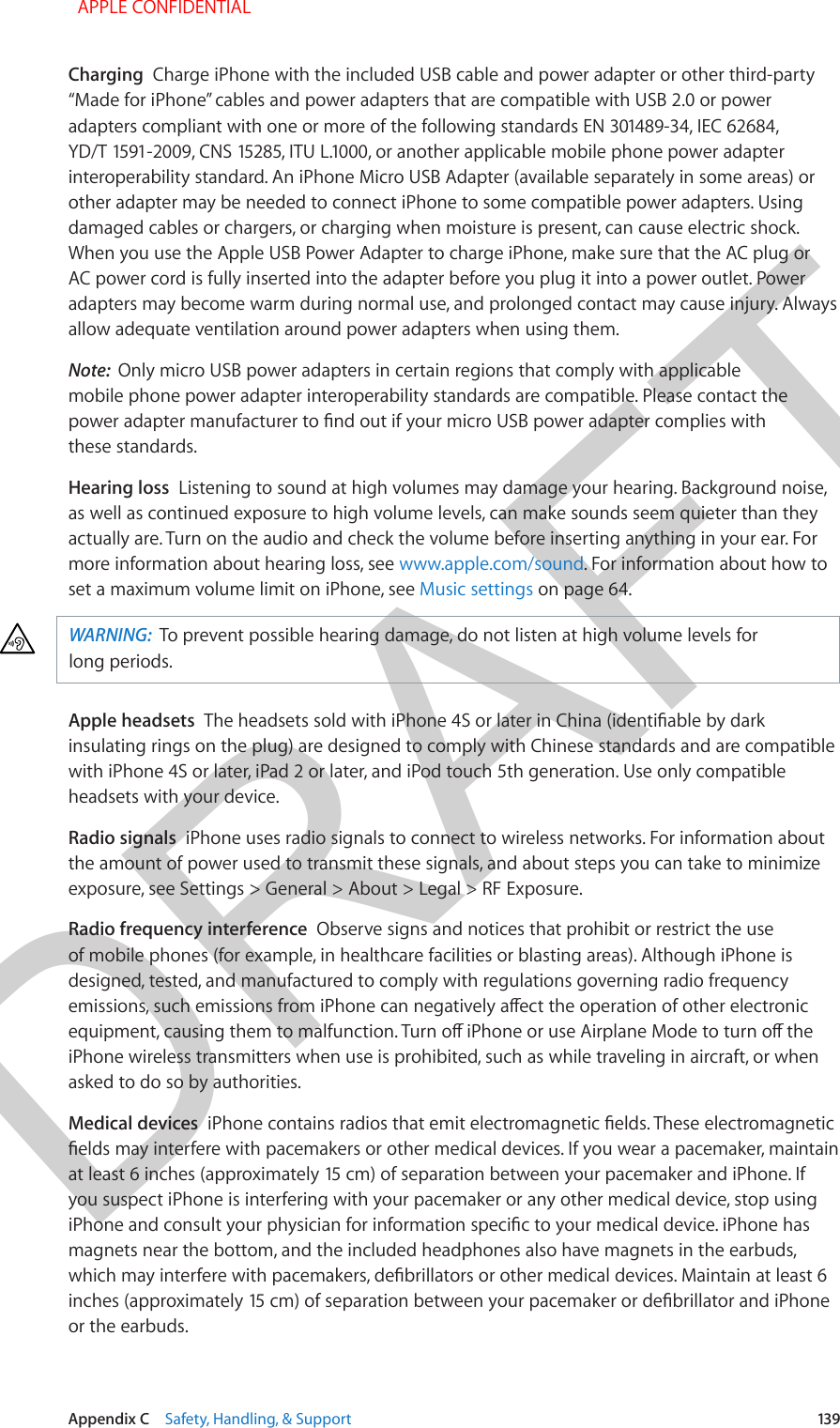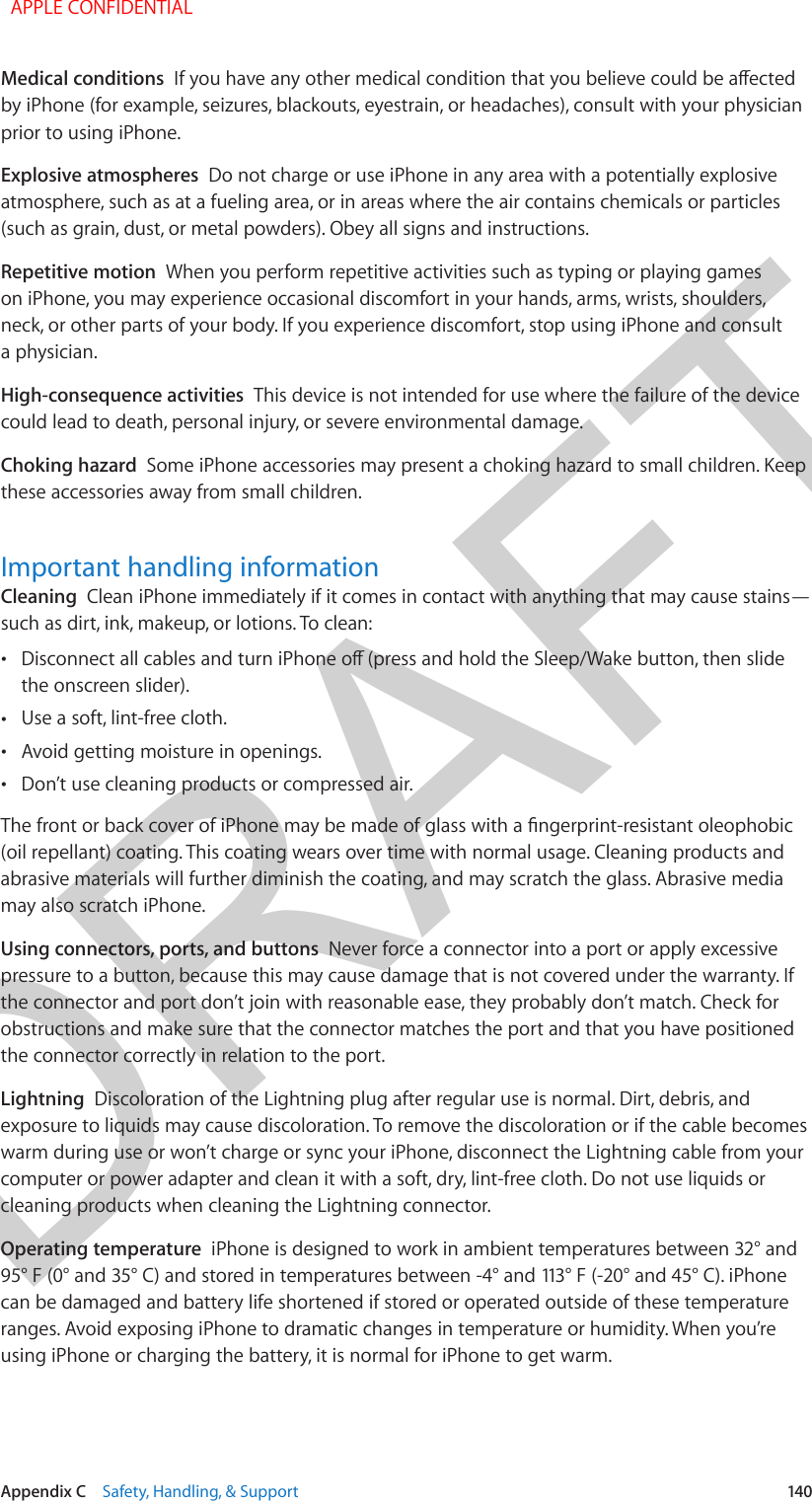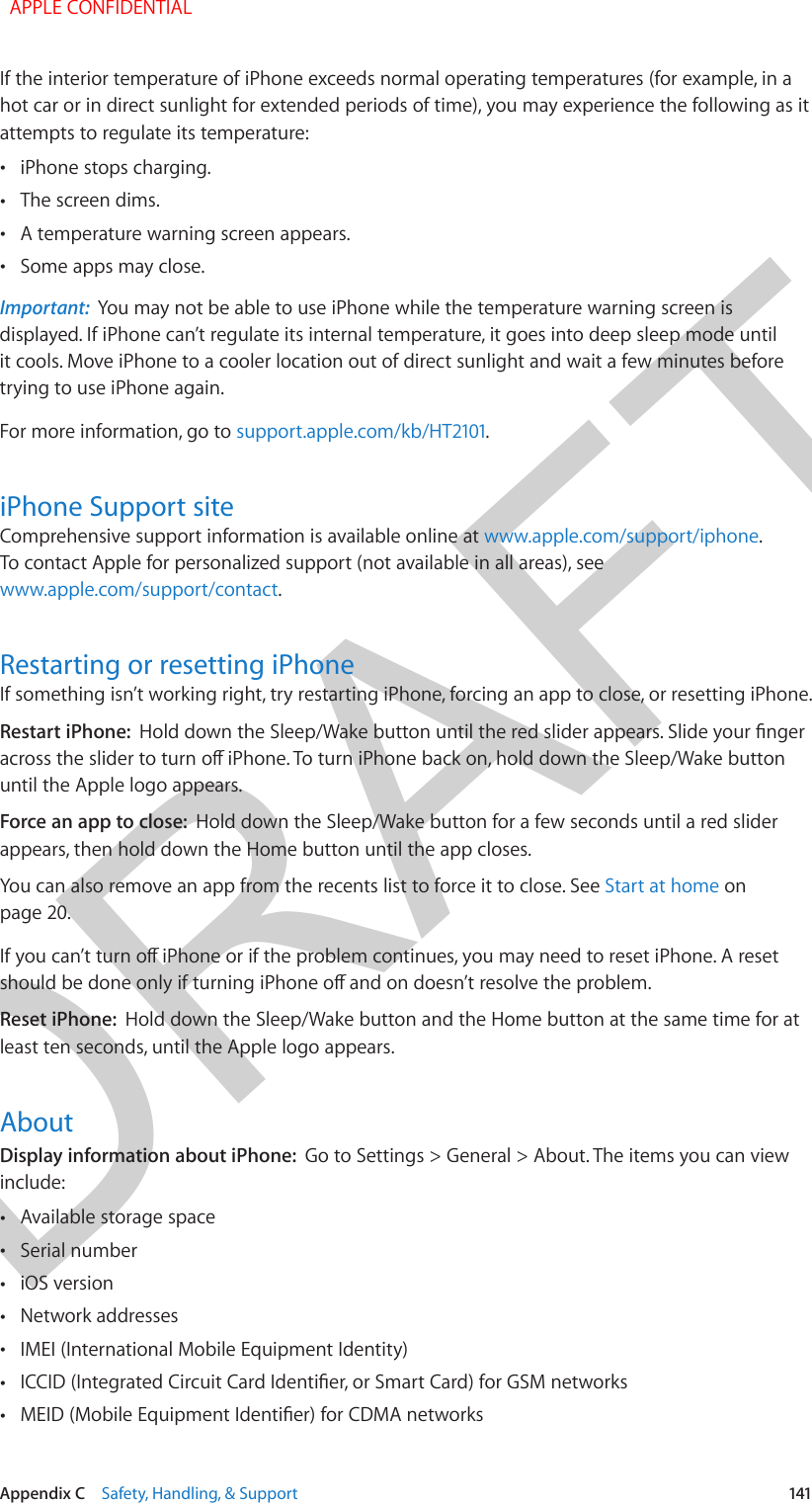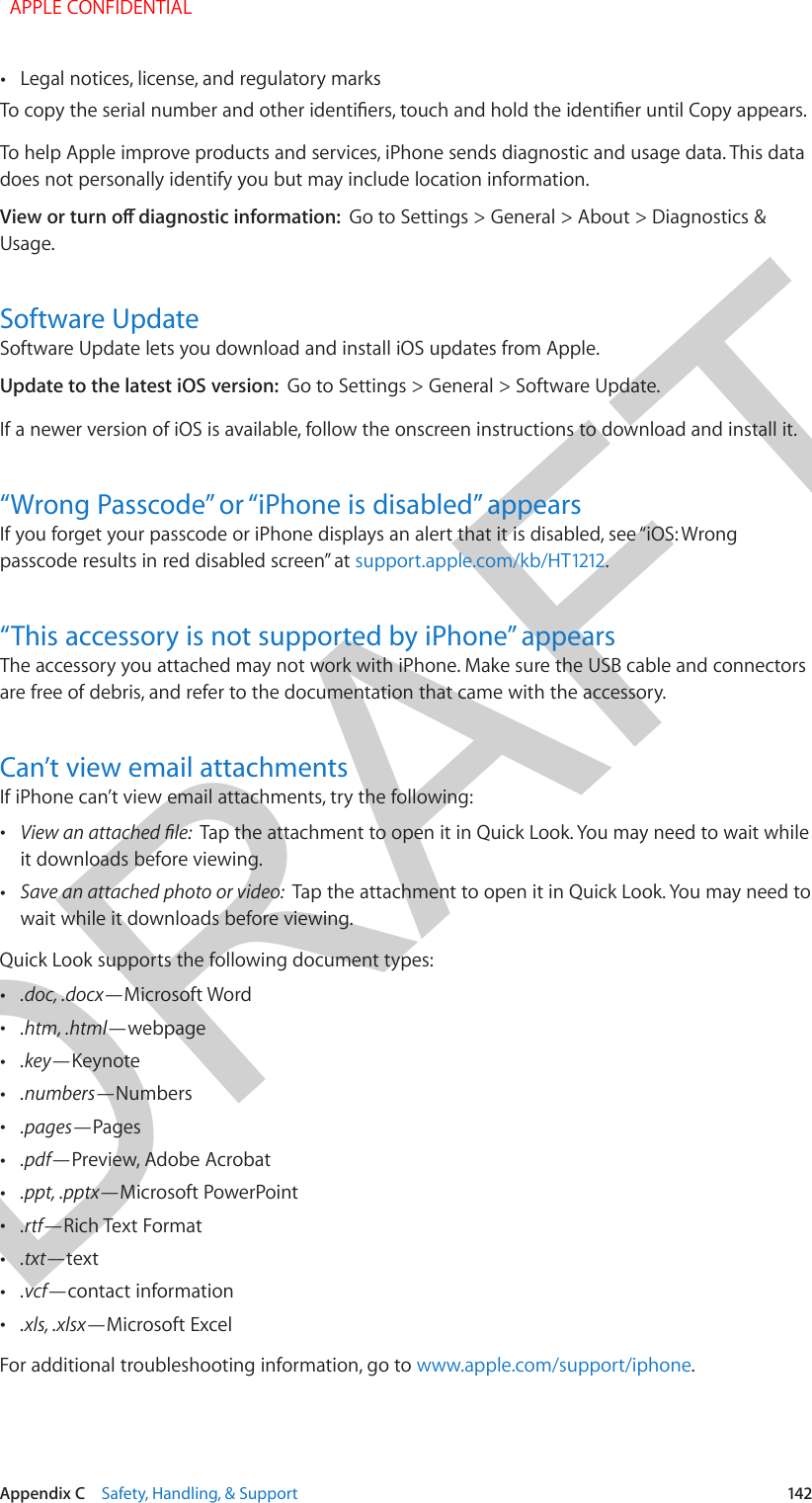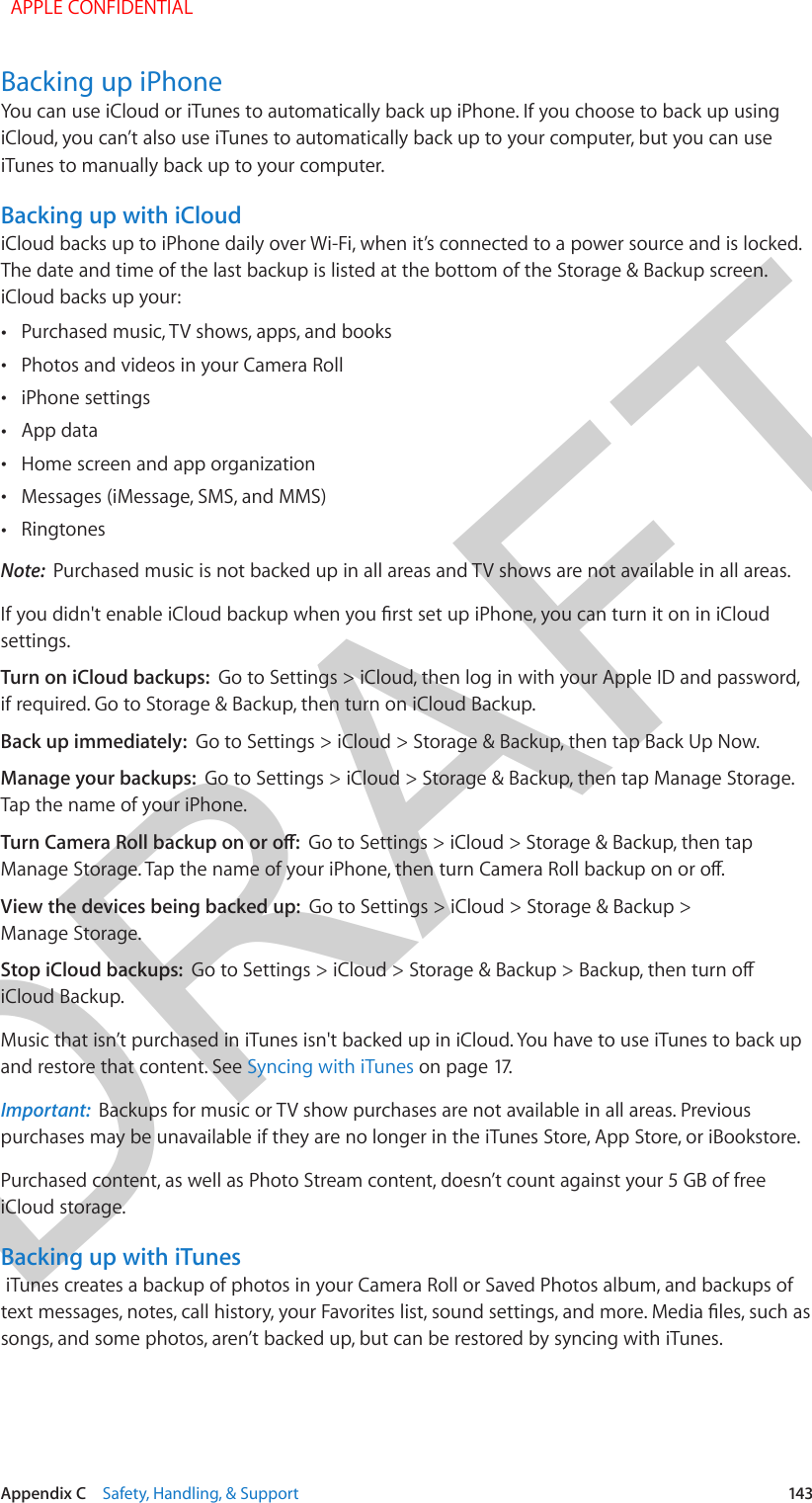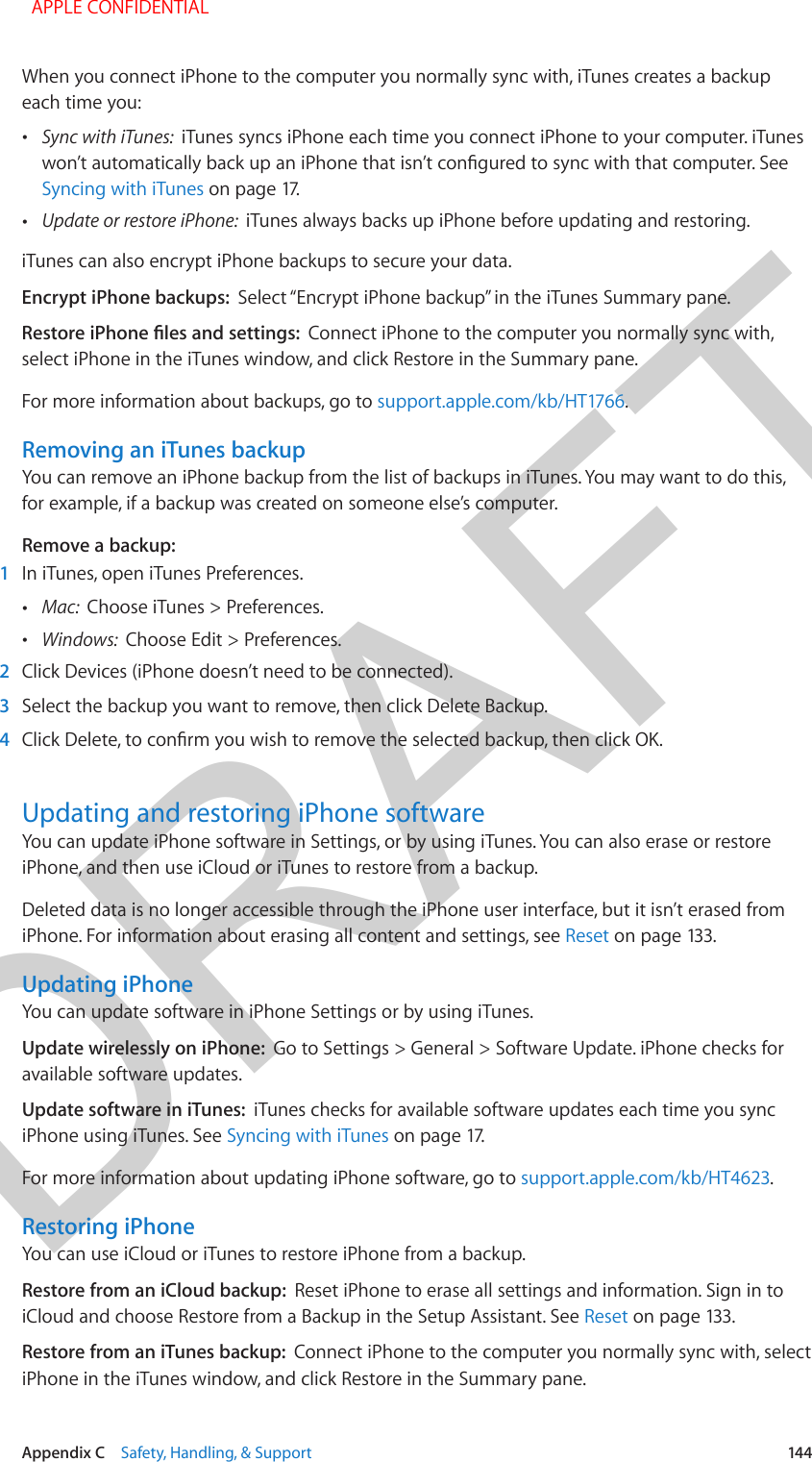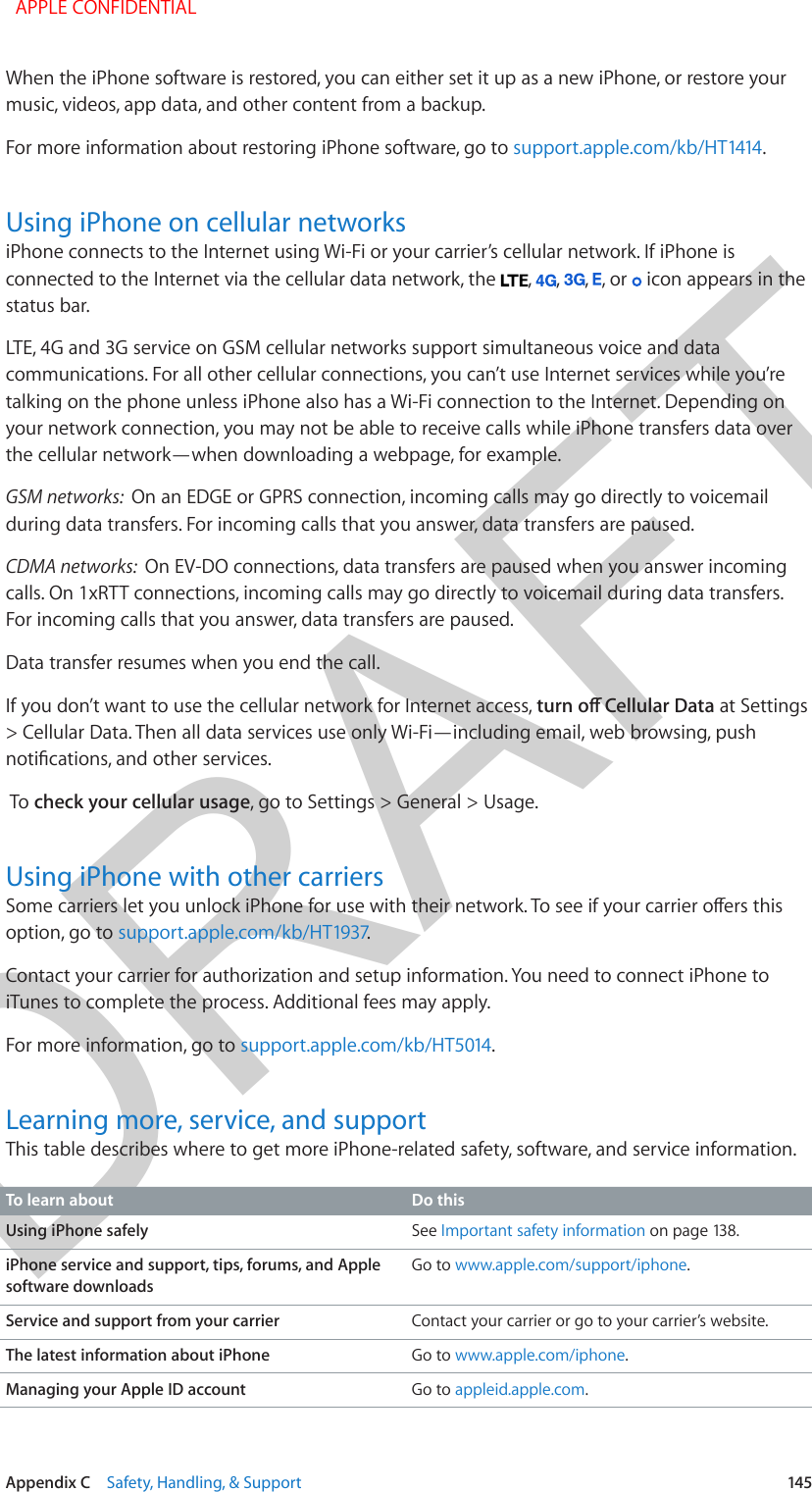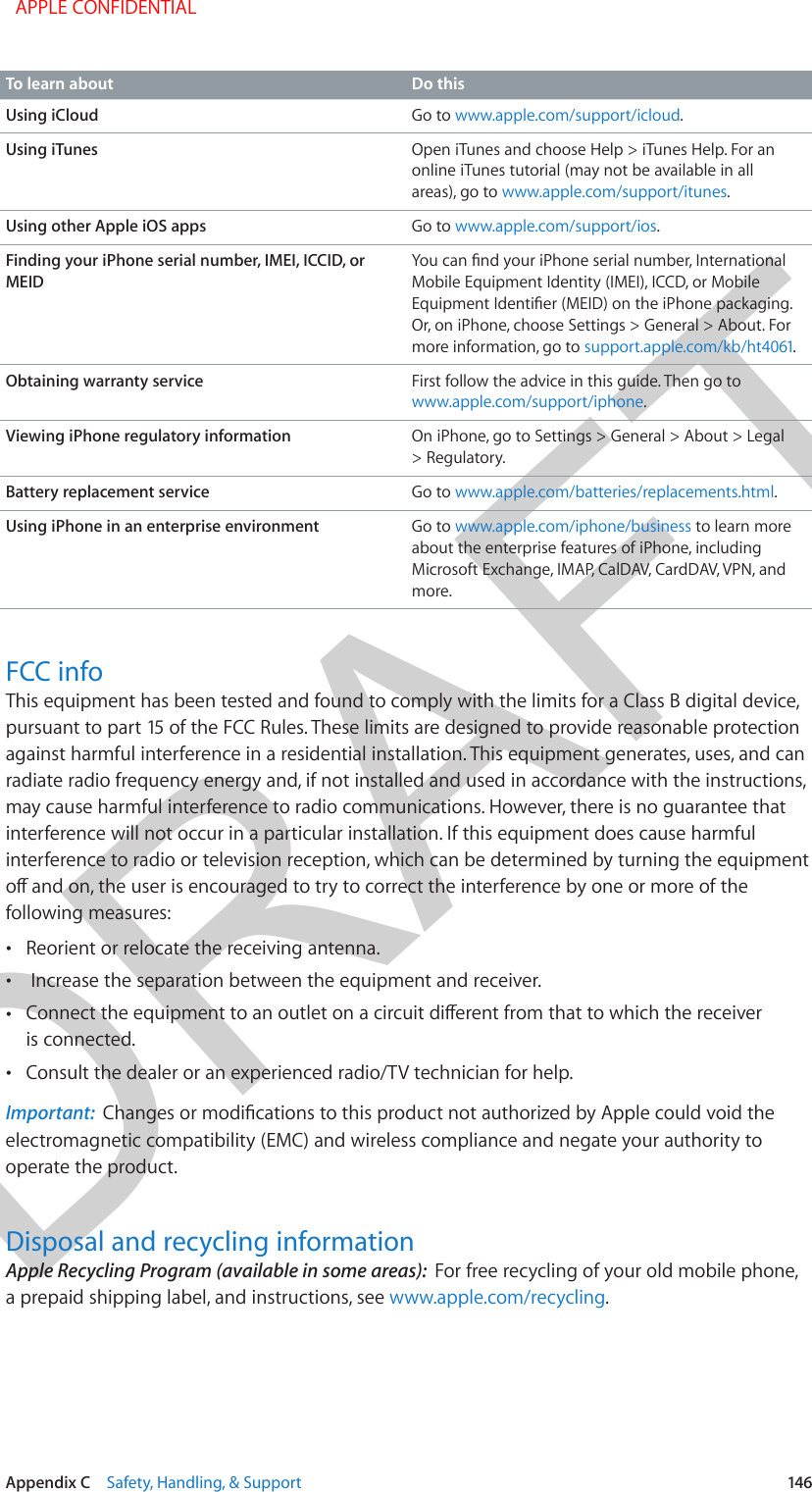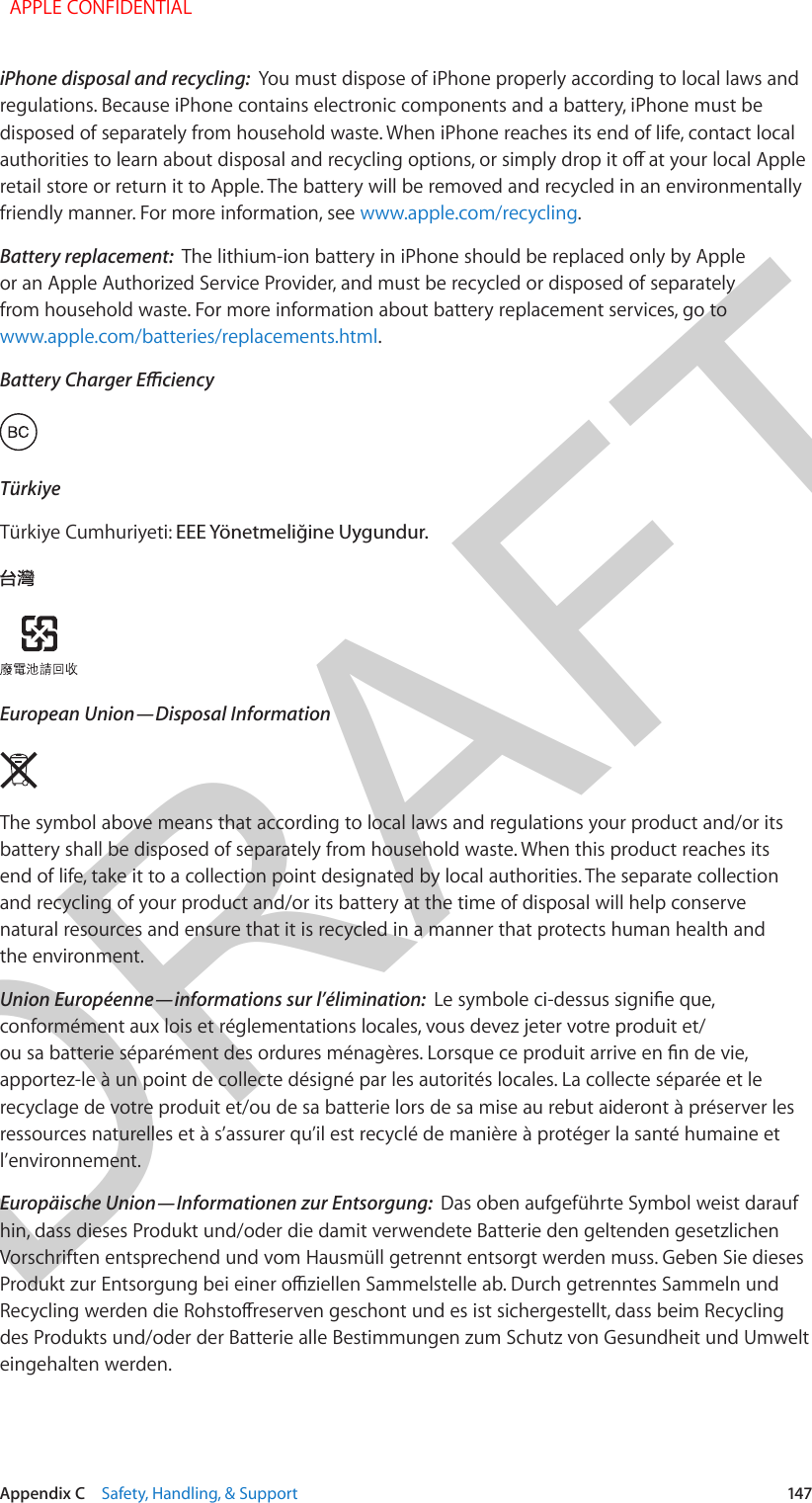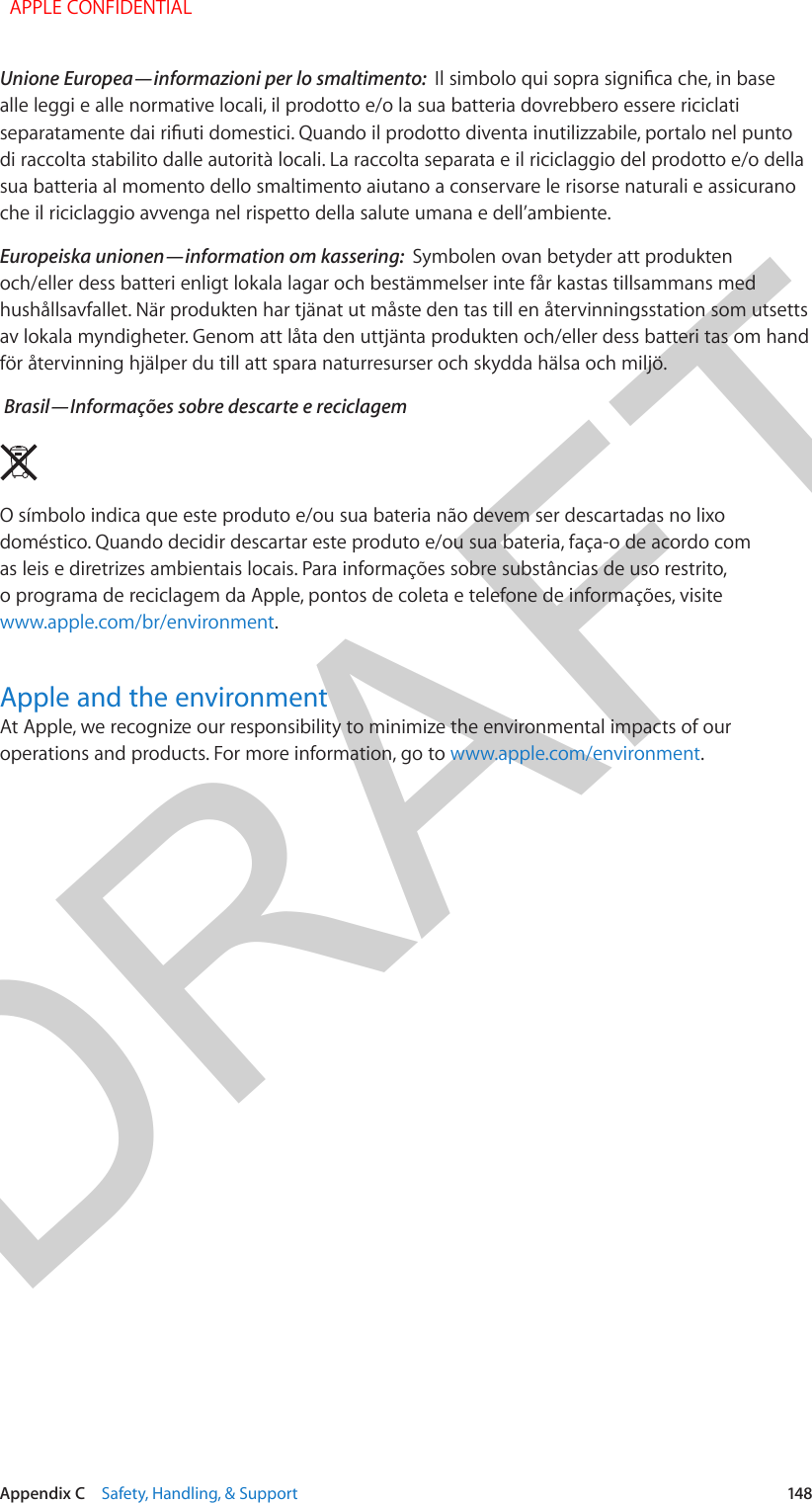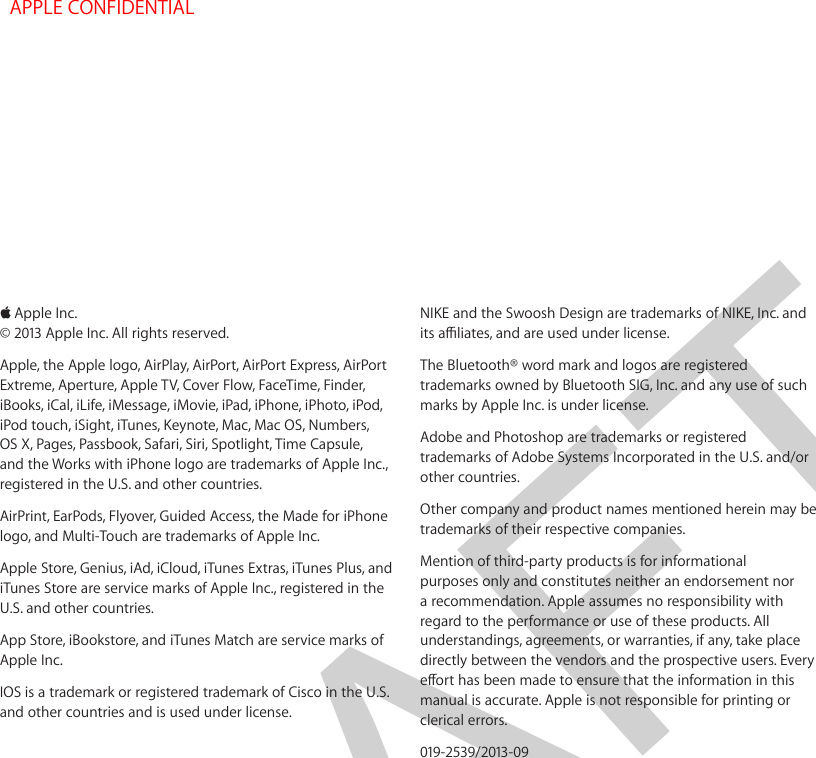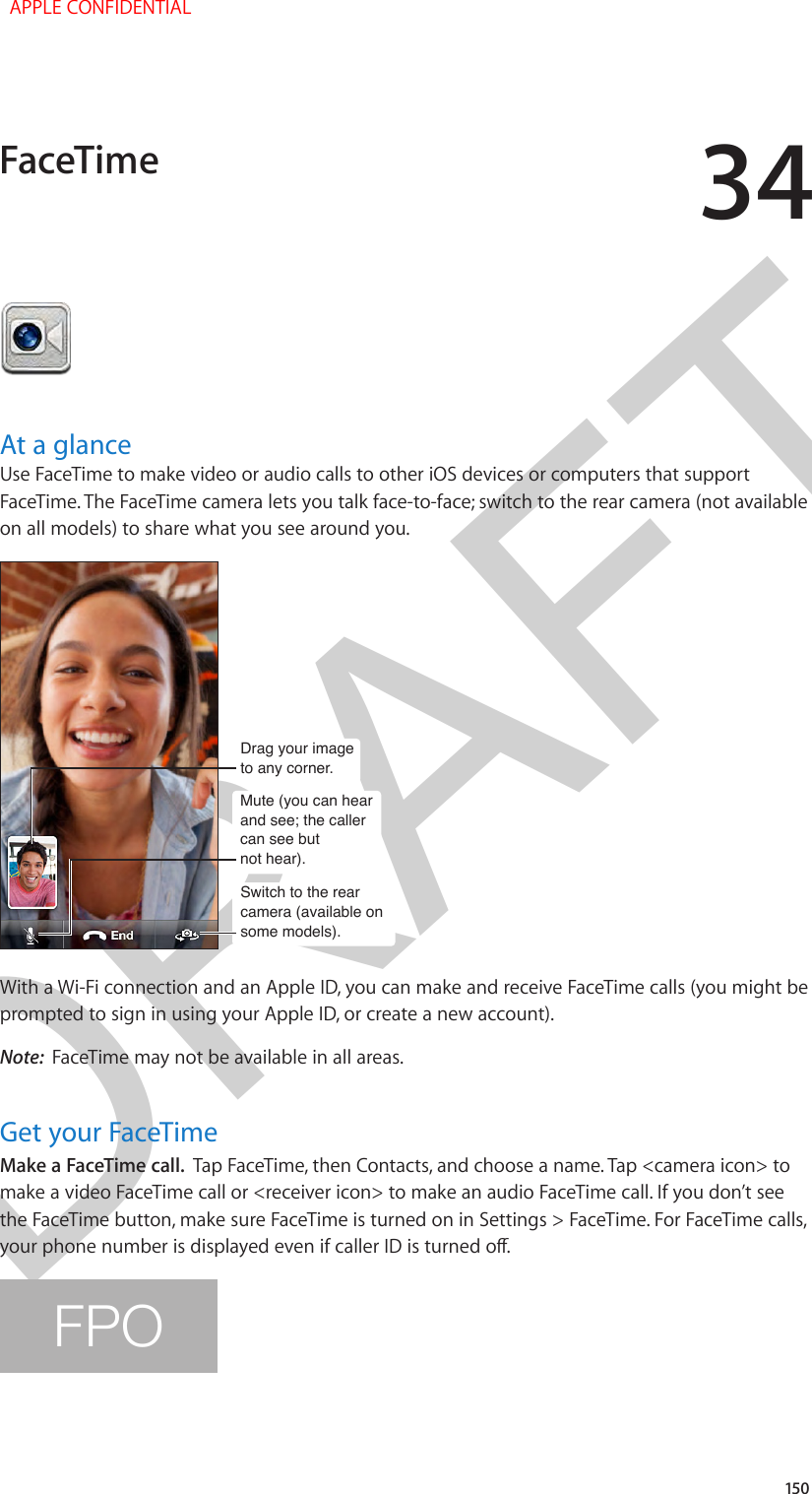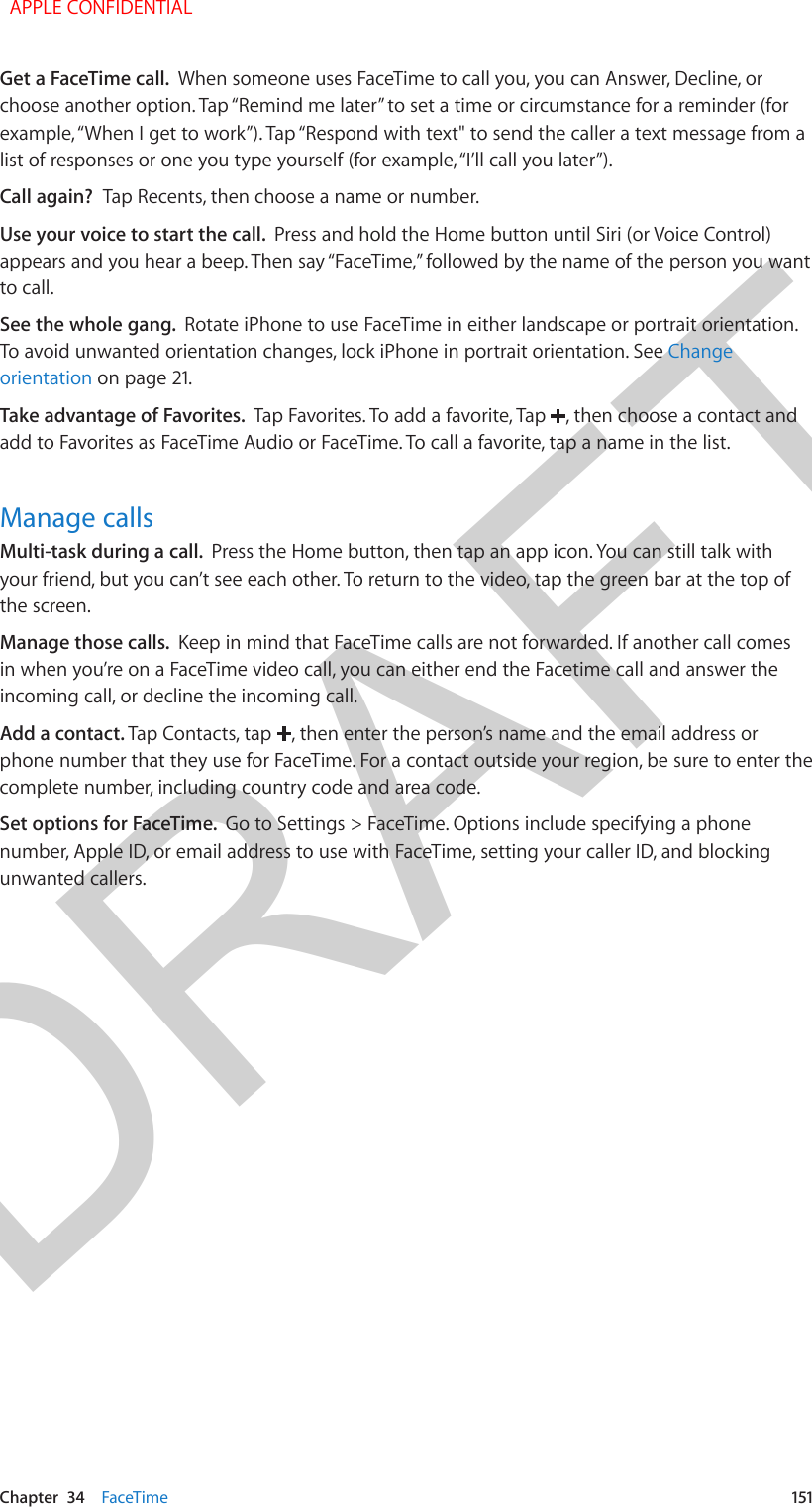Apple E2694B Cellular Phone with Bluetooth and WLAN Radios User Manual iPhone User Guide iOS7 v1 0 Part3
Apple Inc. Cellular Phone with Bluetooth and WLAN Radios iPhone User Guide iOS7 v1 0 Part3
Apple >
Contents
- 1. iPhone_Important_Info_v1.0
- 2. iPhone_User_Guide_iOS7_v1.0_Part1
- 3. iPhone_User_Guide_iOS7_v1.0_Part2
- 4. iPhone_User_Guide_iOS7_v1.0_Part3
iPhone_User_Guide_iOS7_v1.0_Part3
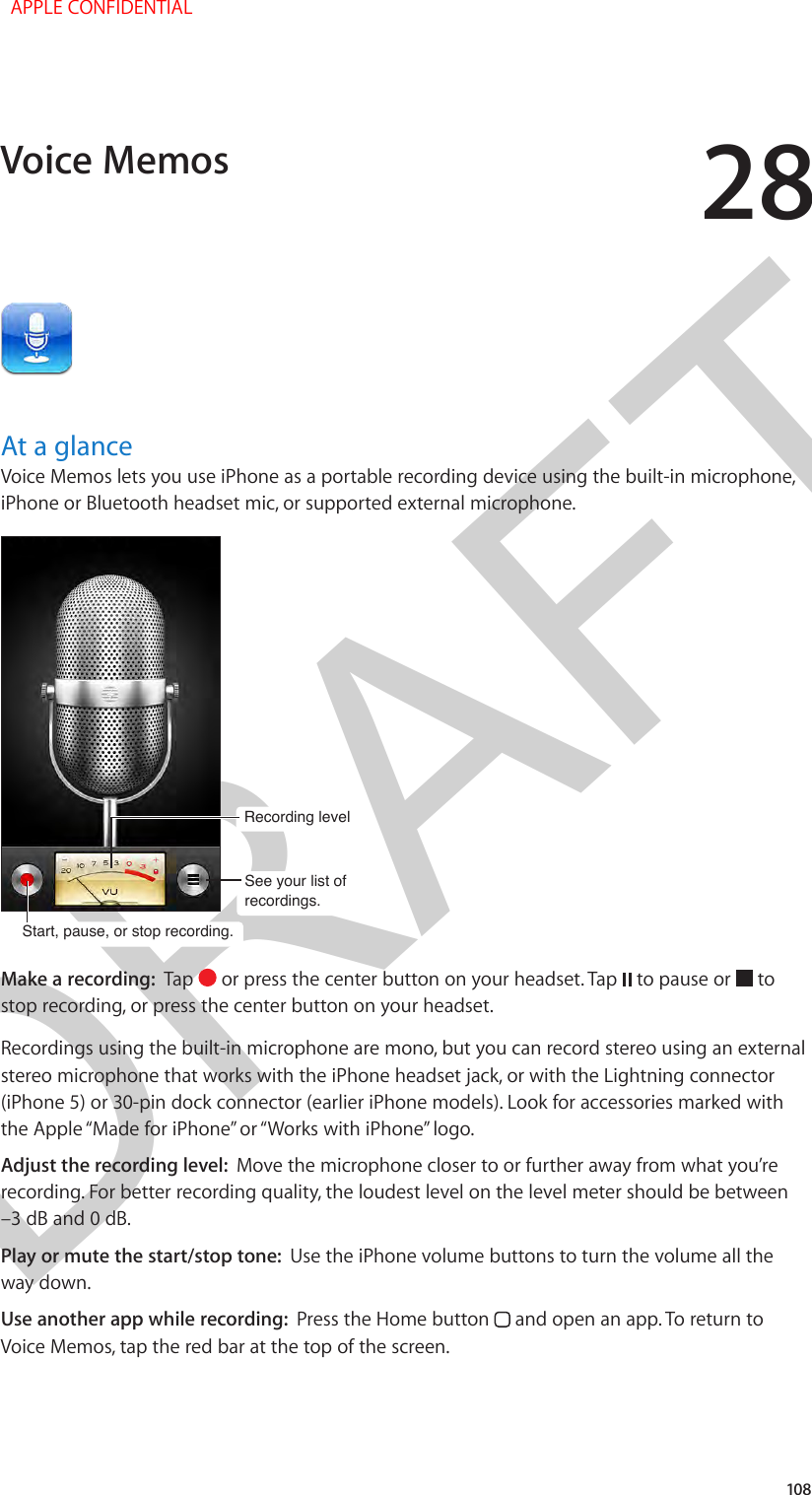
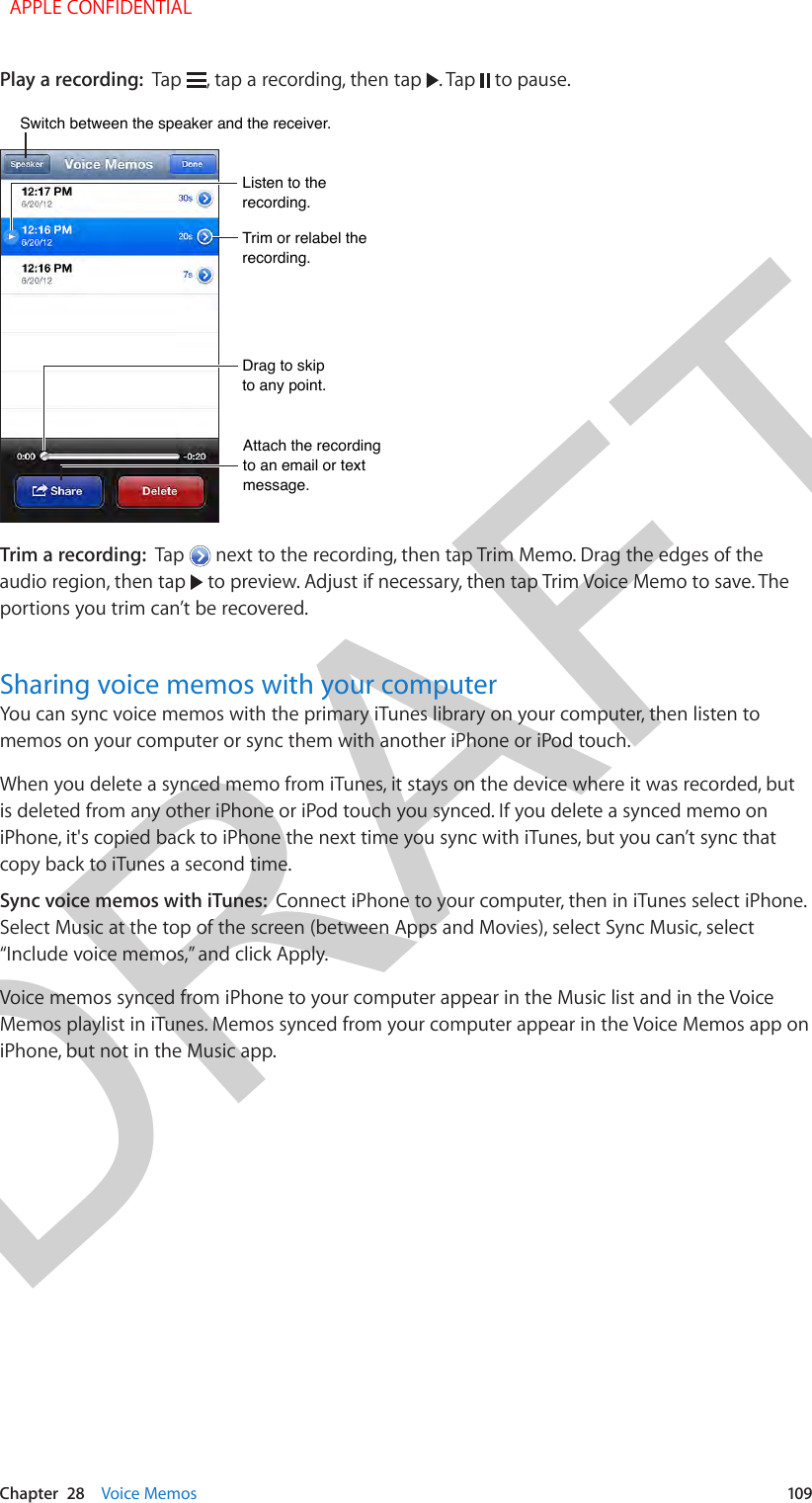
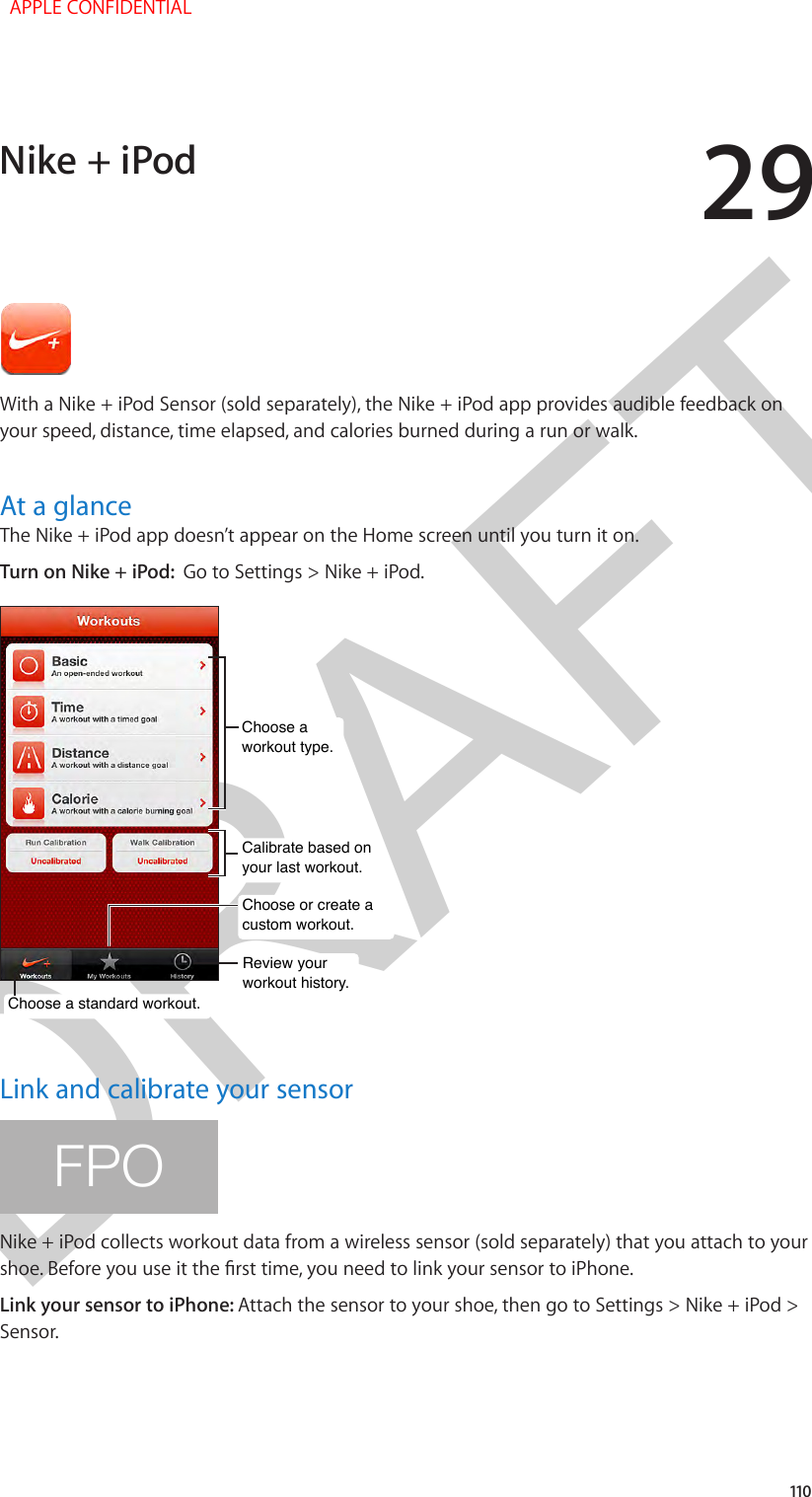
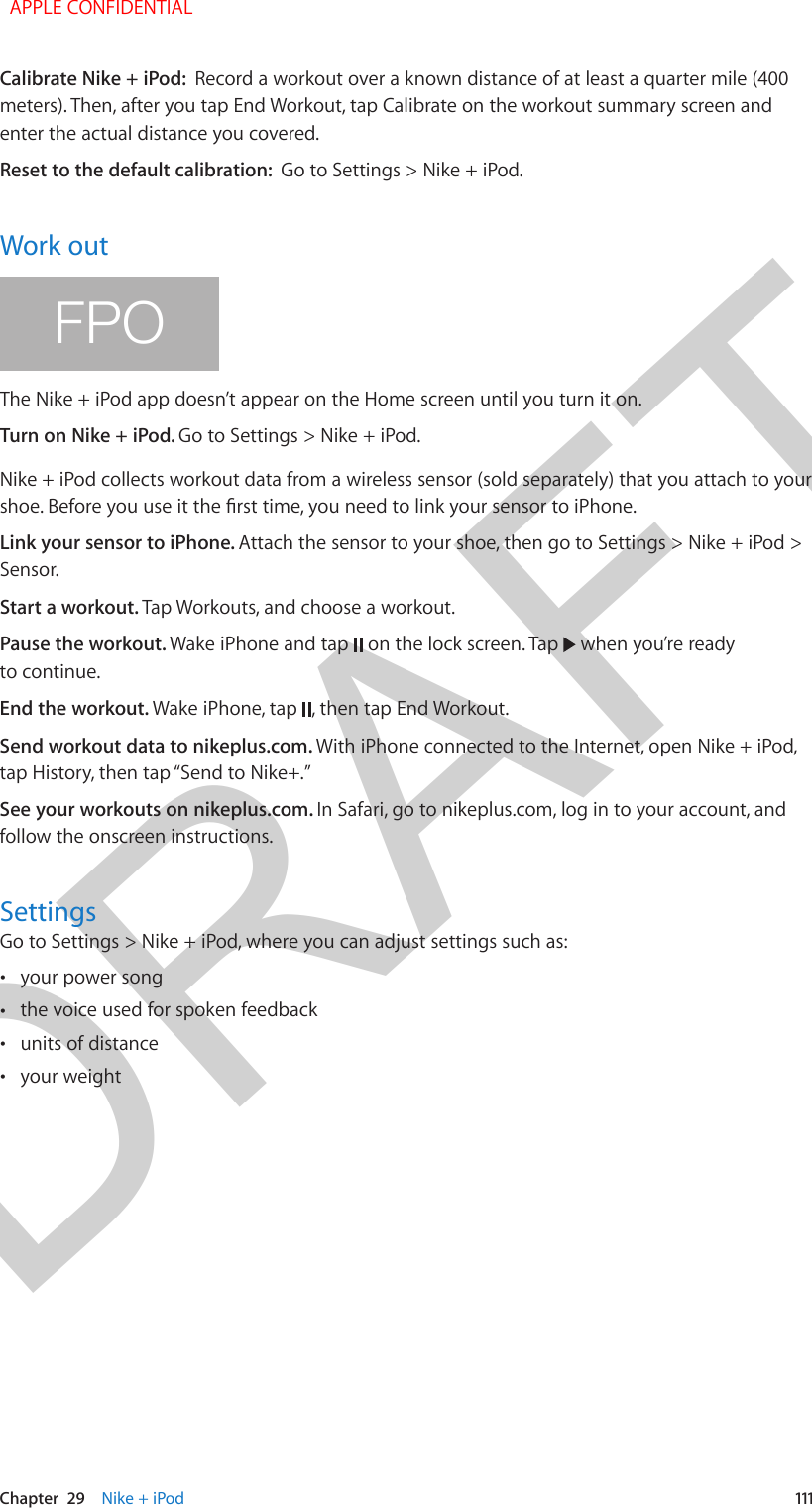
![DRAFT30112Get iBooksFPODownload your free copy of iBooks at the App Store.With an Internet connection and an Apple ID you’ll have everything you need to nd books, get samples of their contents, and read and write reviews. In iBooks, tap Store to visit the iBookstore, where it all begins.Download previous purchases.You can download any book you’ve purchased (even it was free) at any time, on your iPhone, iPod touch, iPad, and [redacted]. In Settings > iTunes & App Stores you can turn on automatic downloads to have purchases sent to all your devices.Update a book.A badge noties you if there’s an update to a book you bought. To get it, tap Store, then tap Purchased, then Updates.Read a bookFPOShow the controls.Tap near the center of a page. Not all books have all controls, but some of the things you can do include searching, viewing the table of contents, and sharing what you're readingRemember the interesting parts.Add notes or highlights to your favorite passages. Double-tap a word, move the grab points to adjust the selection, then tap Note or Highlight in the menu that appears. In some books, you can quickly add a highlight by dragging over the text you want to mark.Never mind.Remove a note or highlight by tapping it to display a menu, then tap TK ICON. See all of your notes by tapping iBooks APPLE CONFIDENTIAL](https://usermanual.wiki/Apple/E2694B.iPhone-User-Guide-iOS7-v1-0-Part3/User-Guide-2048393-Page-5.png)
